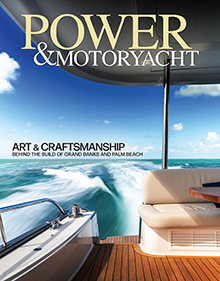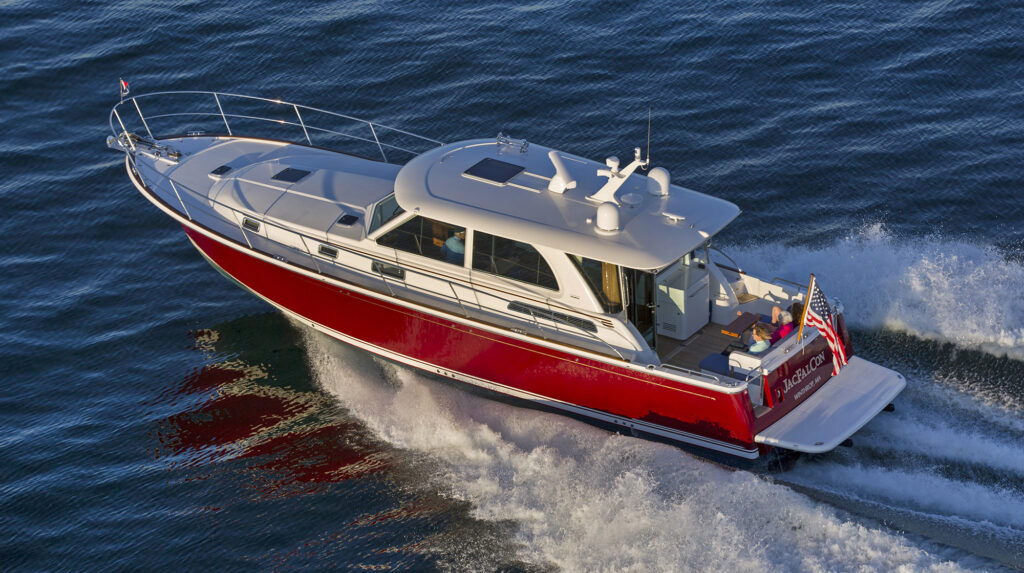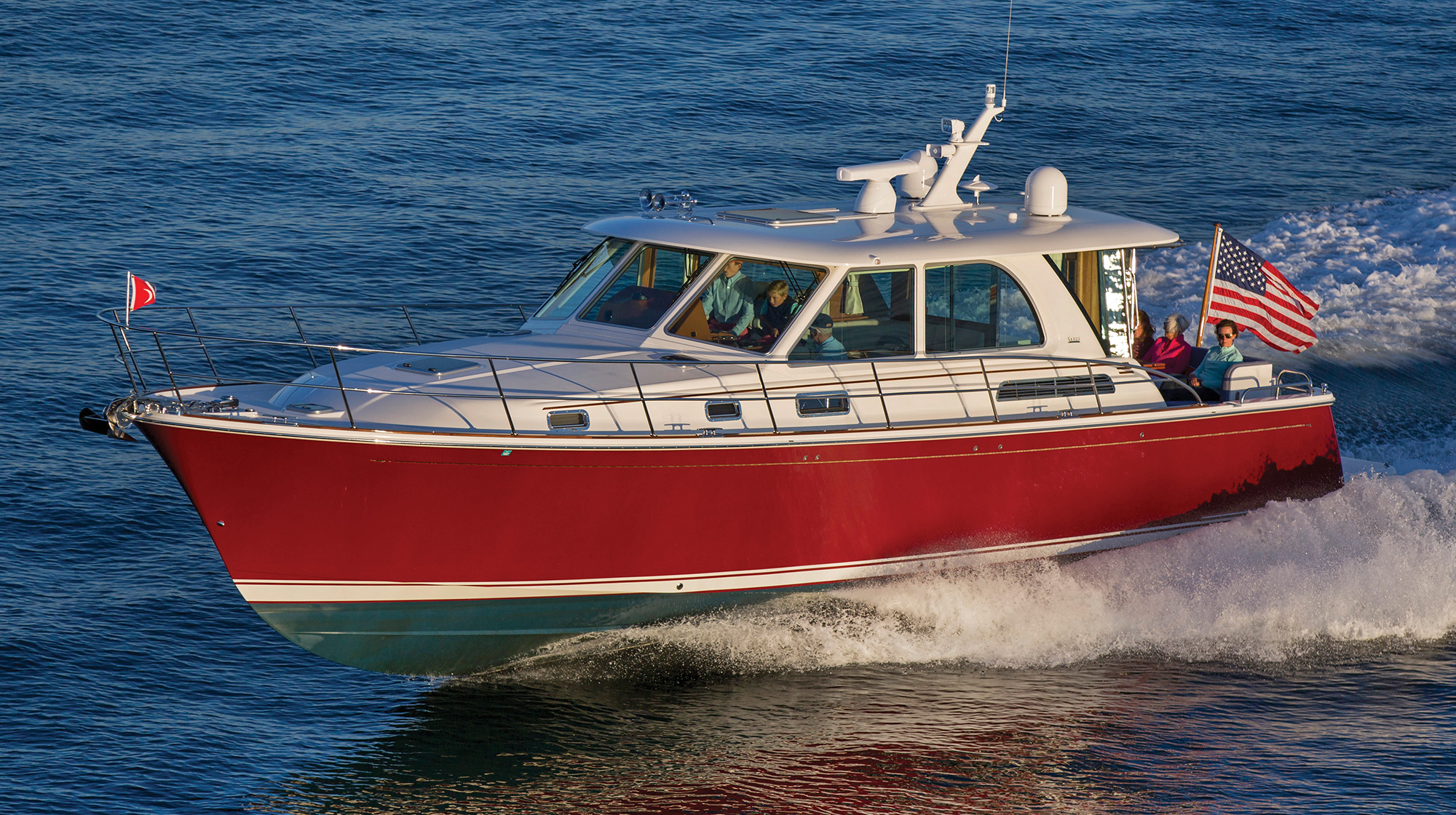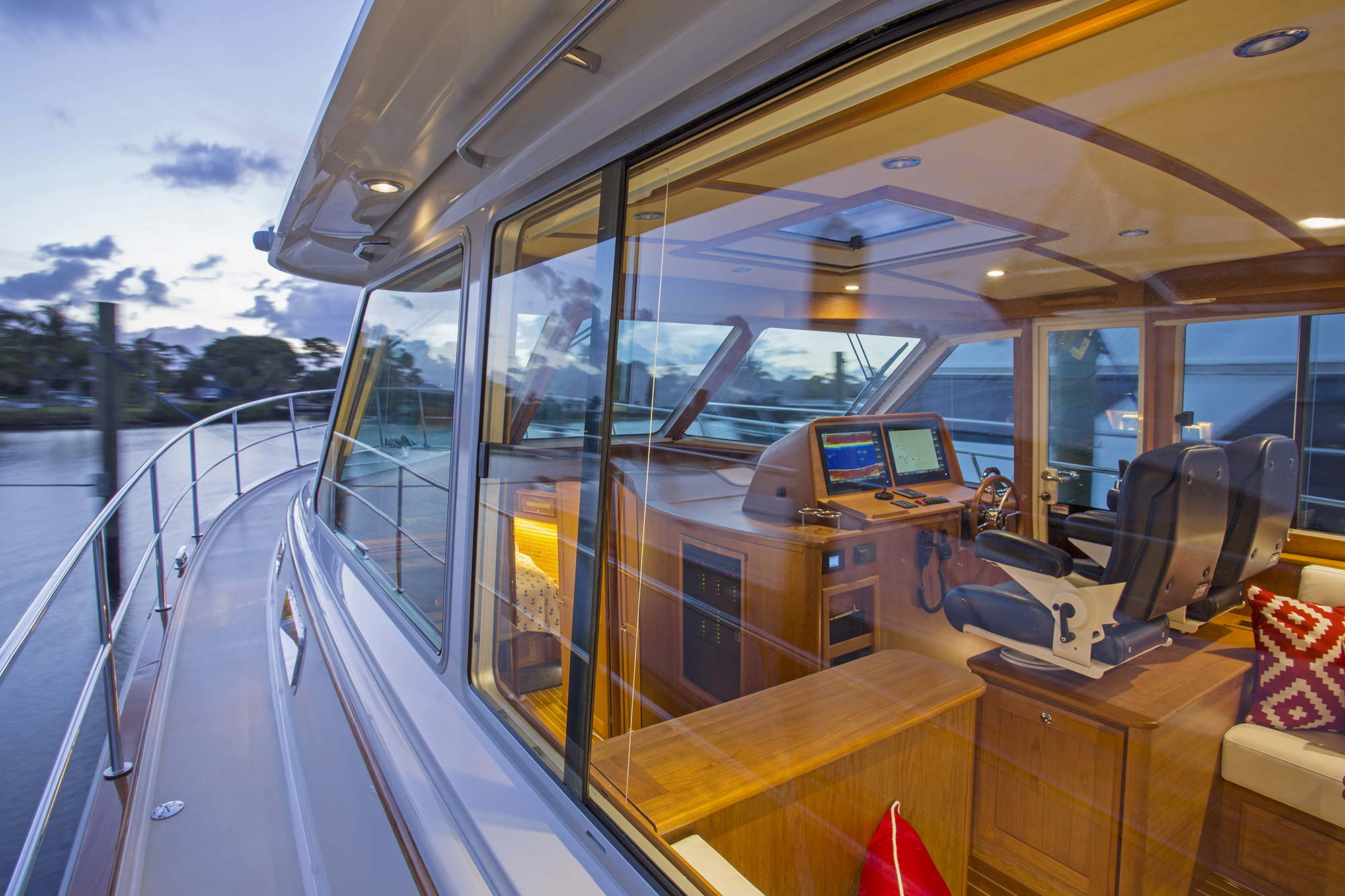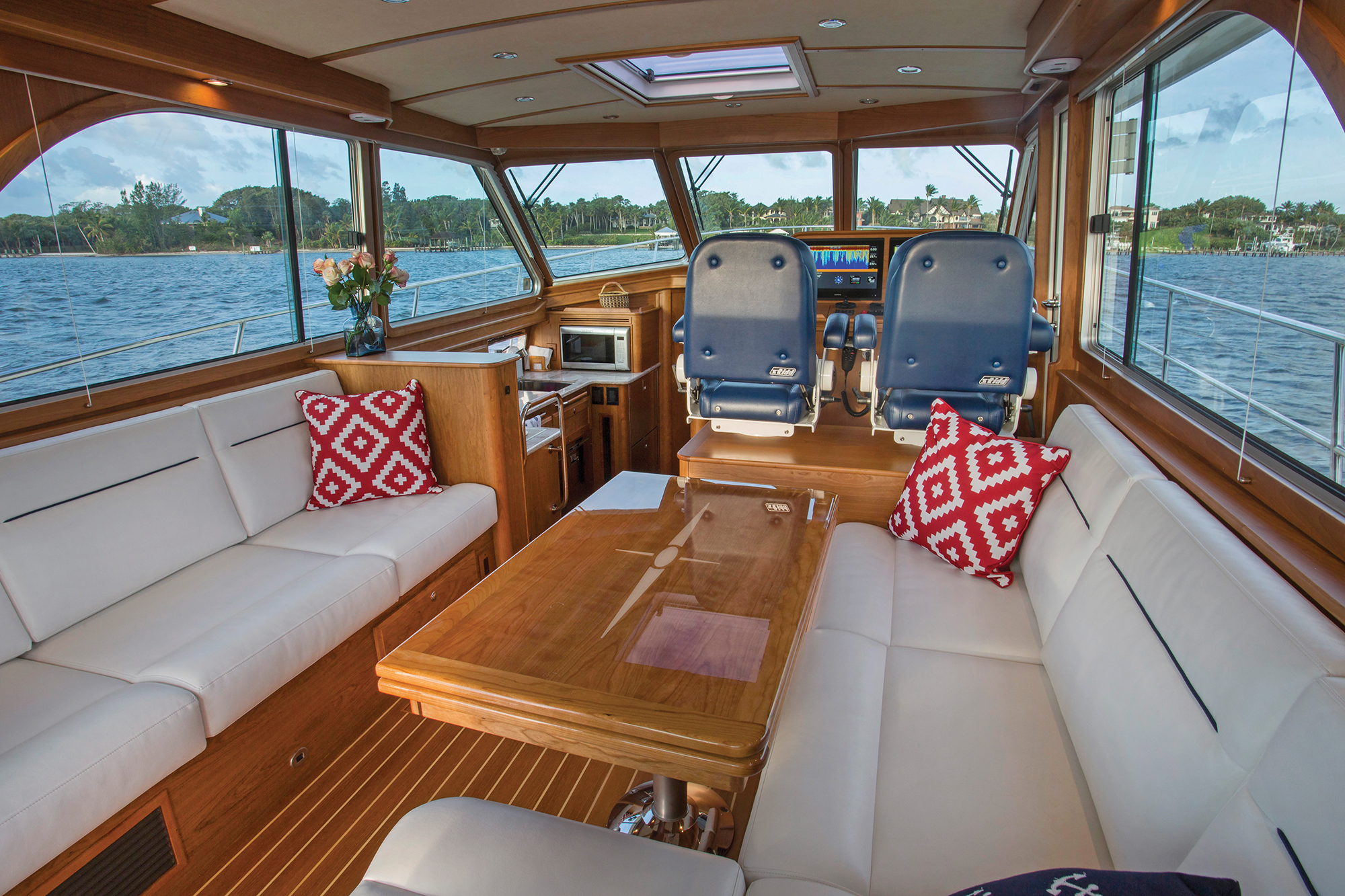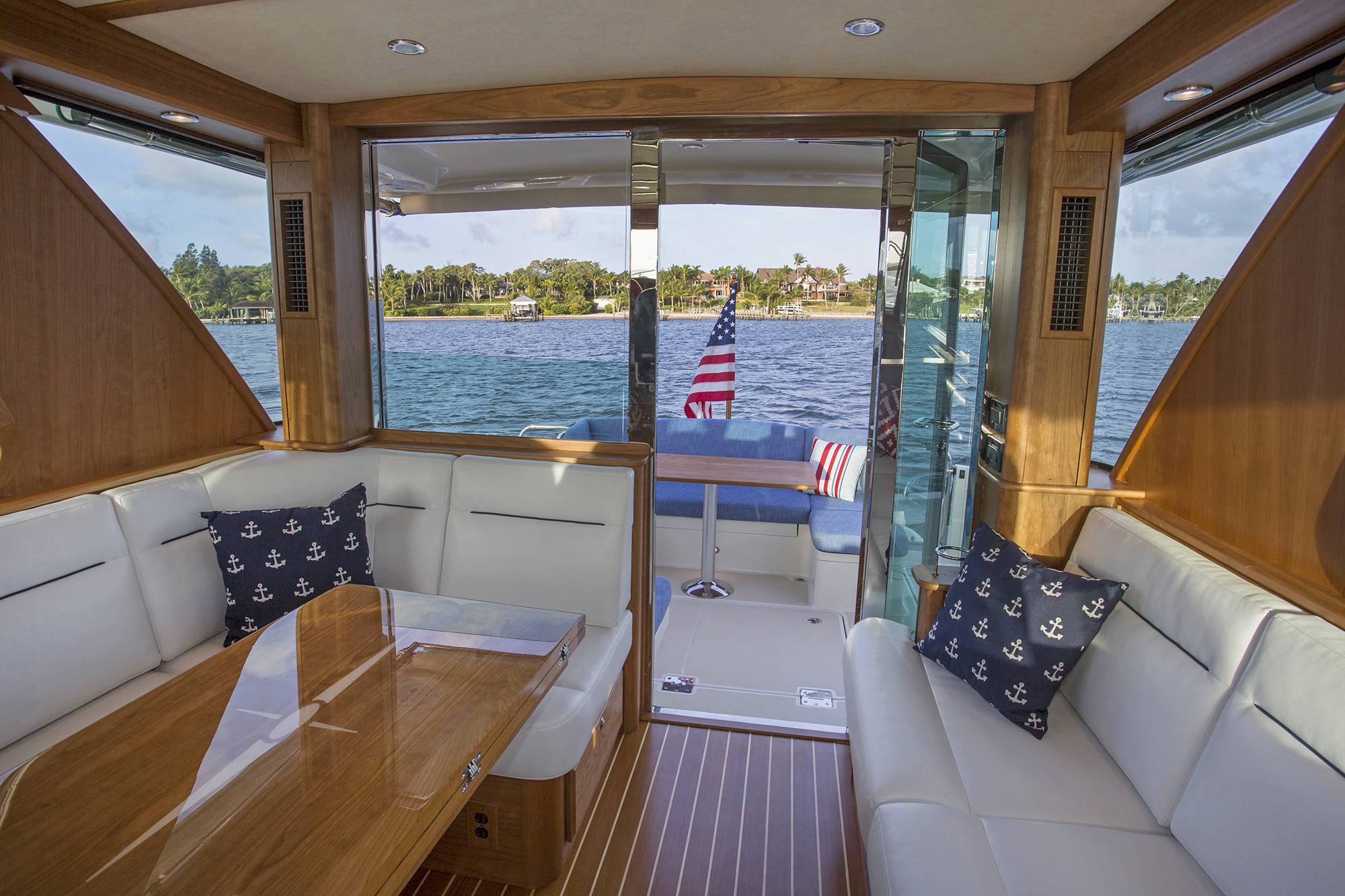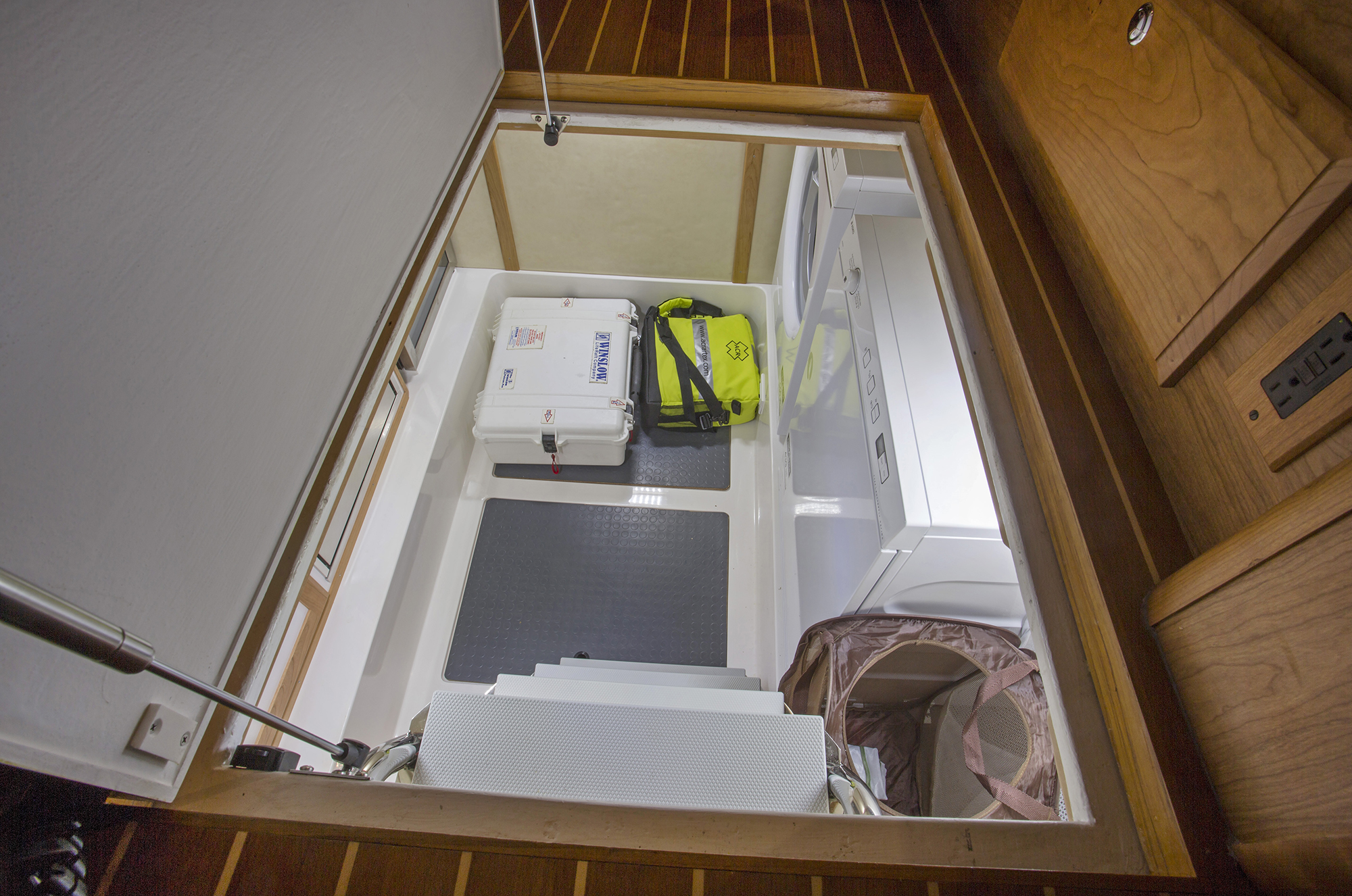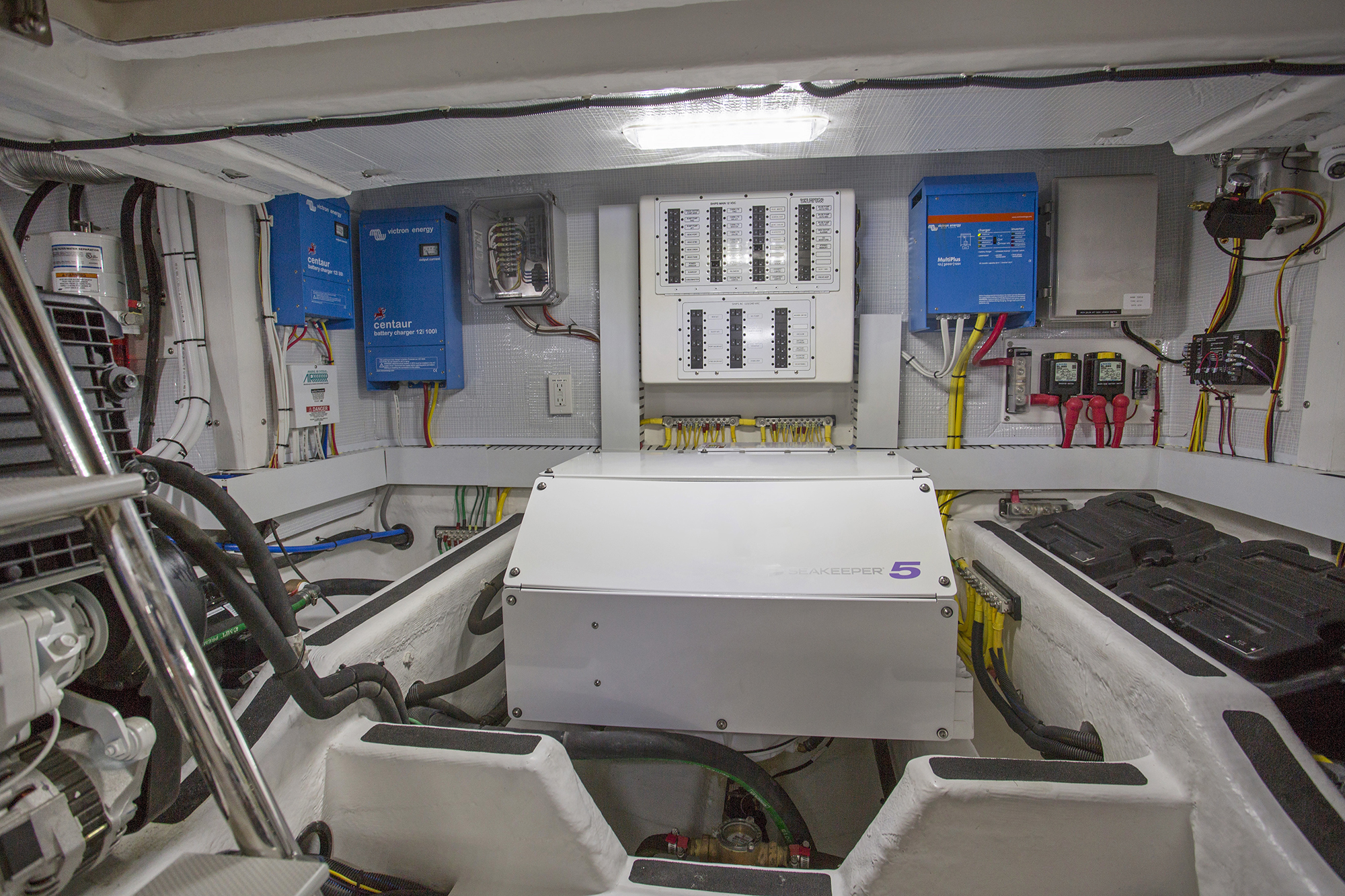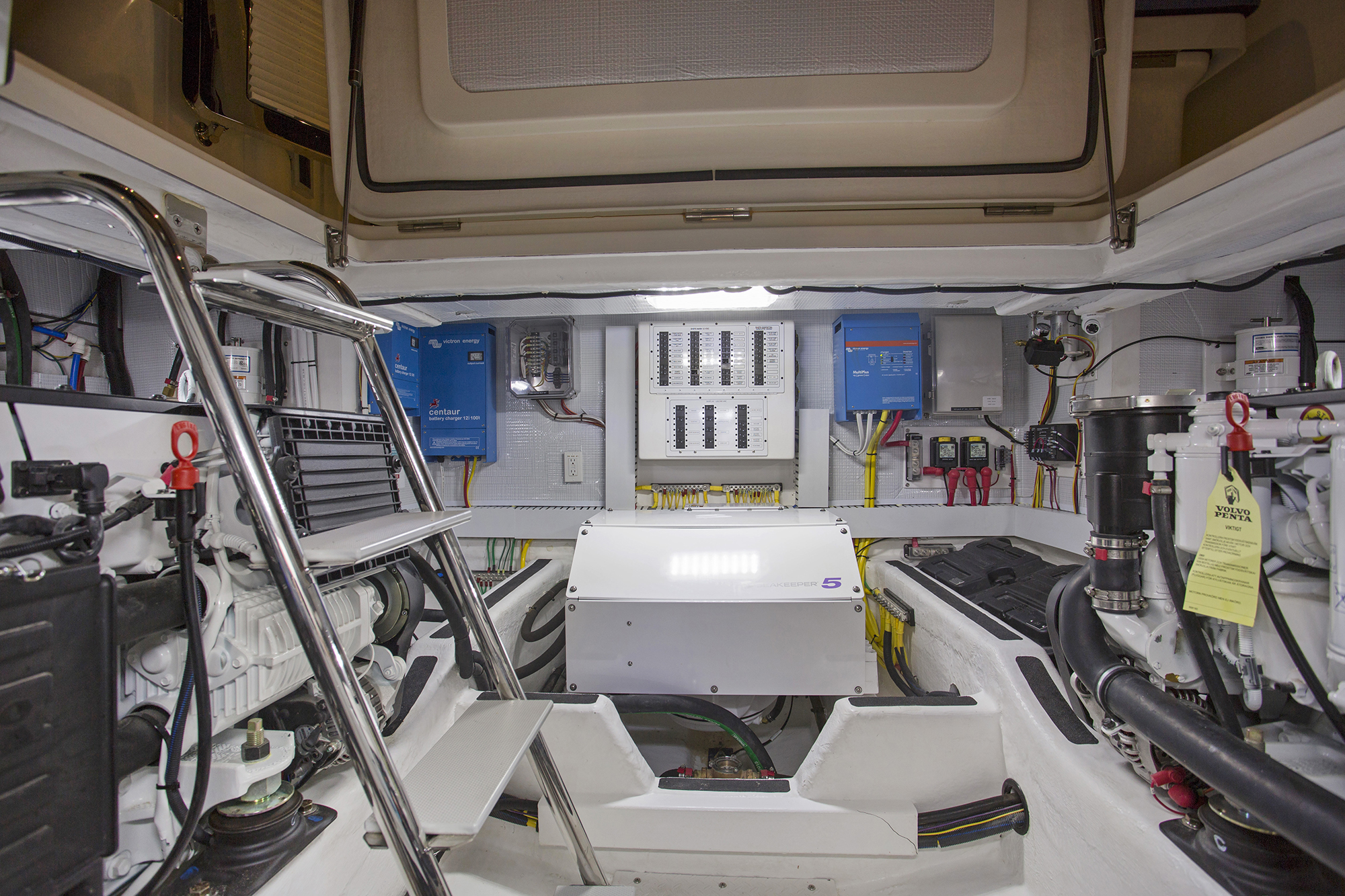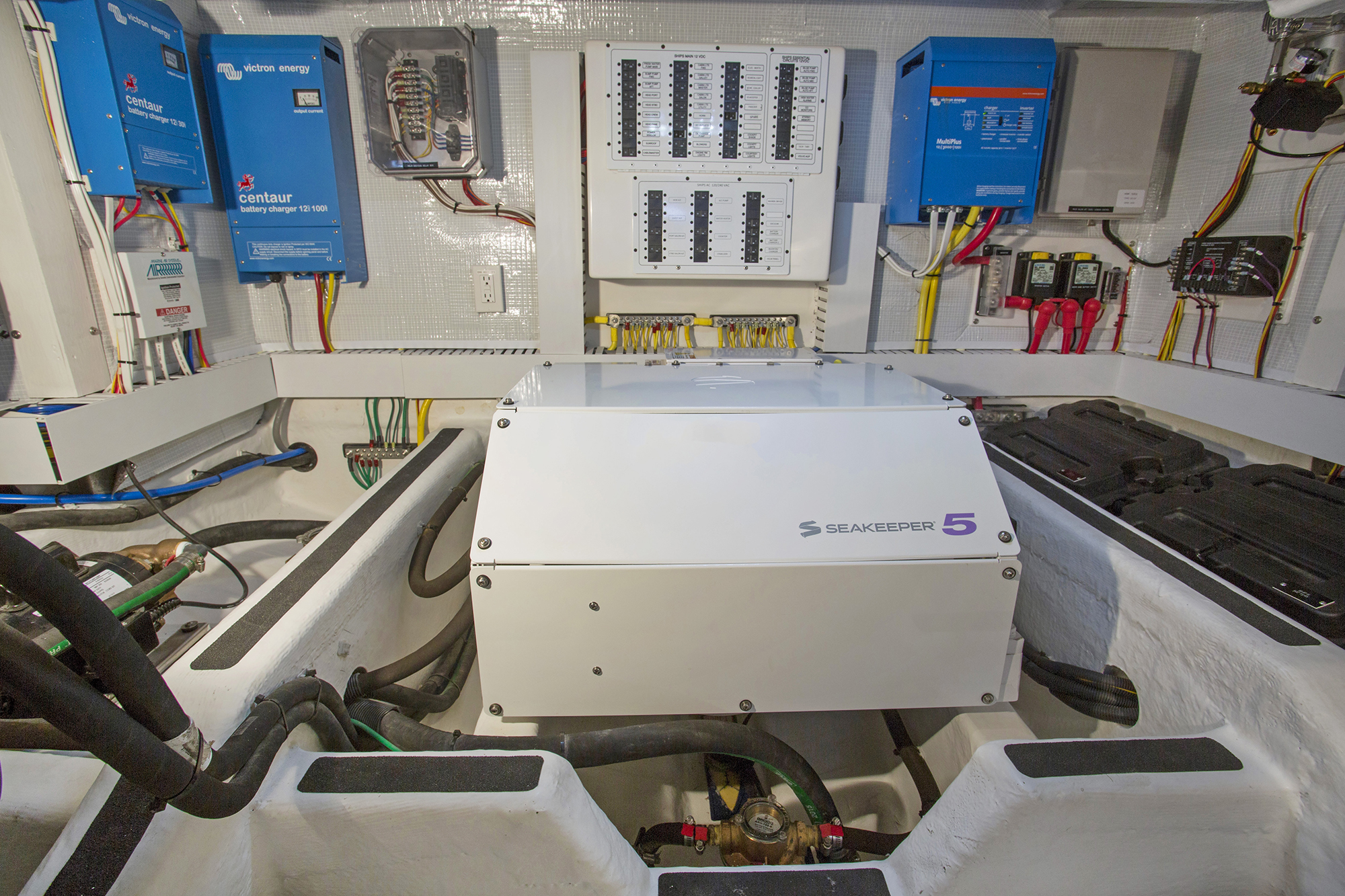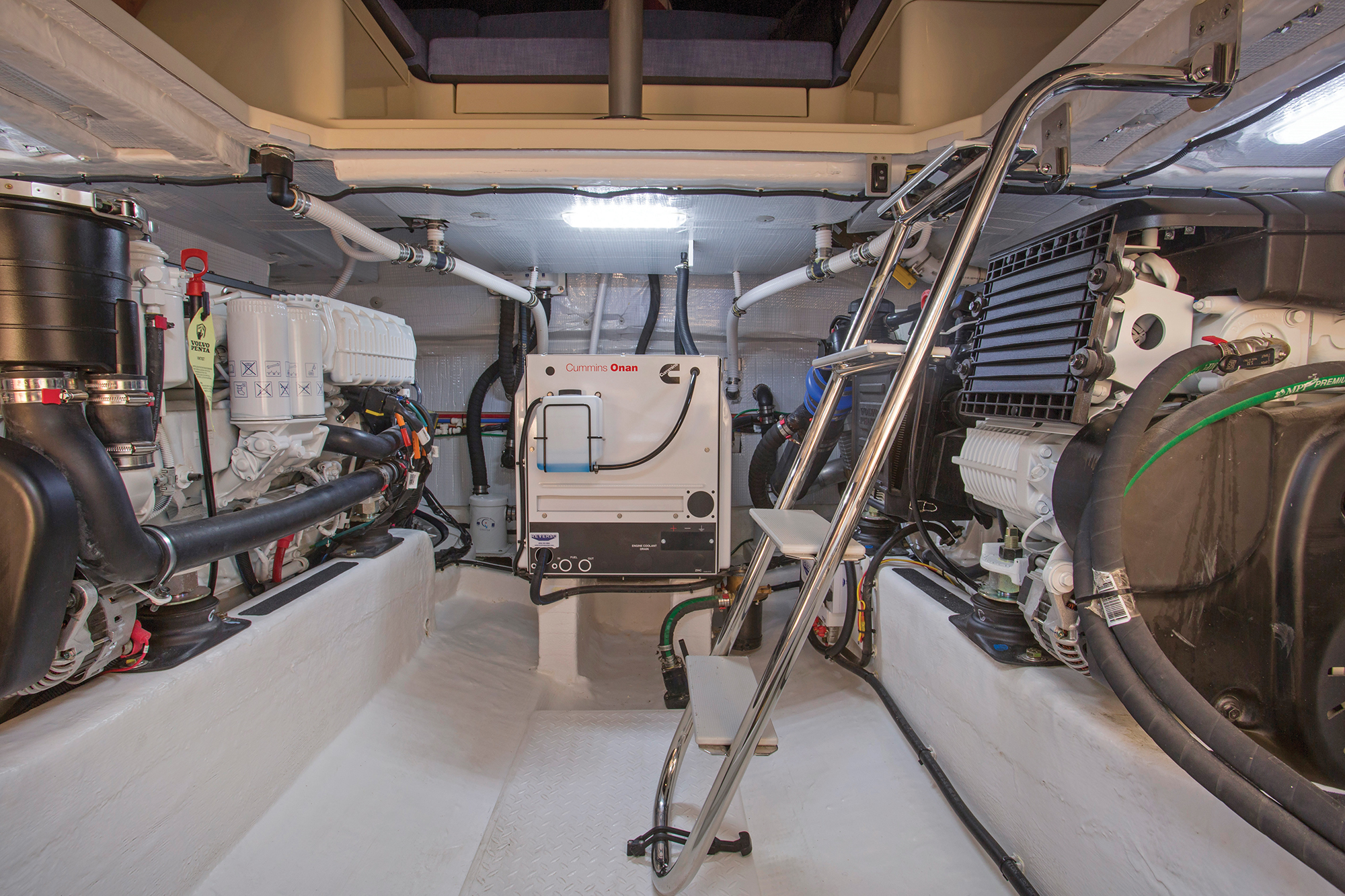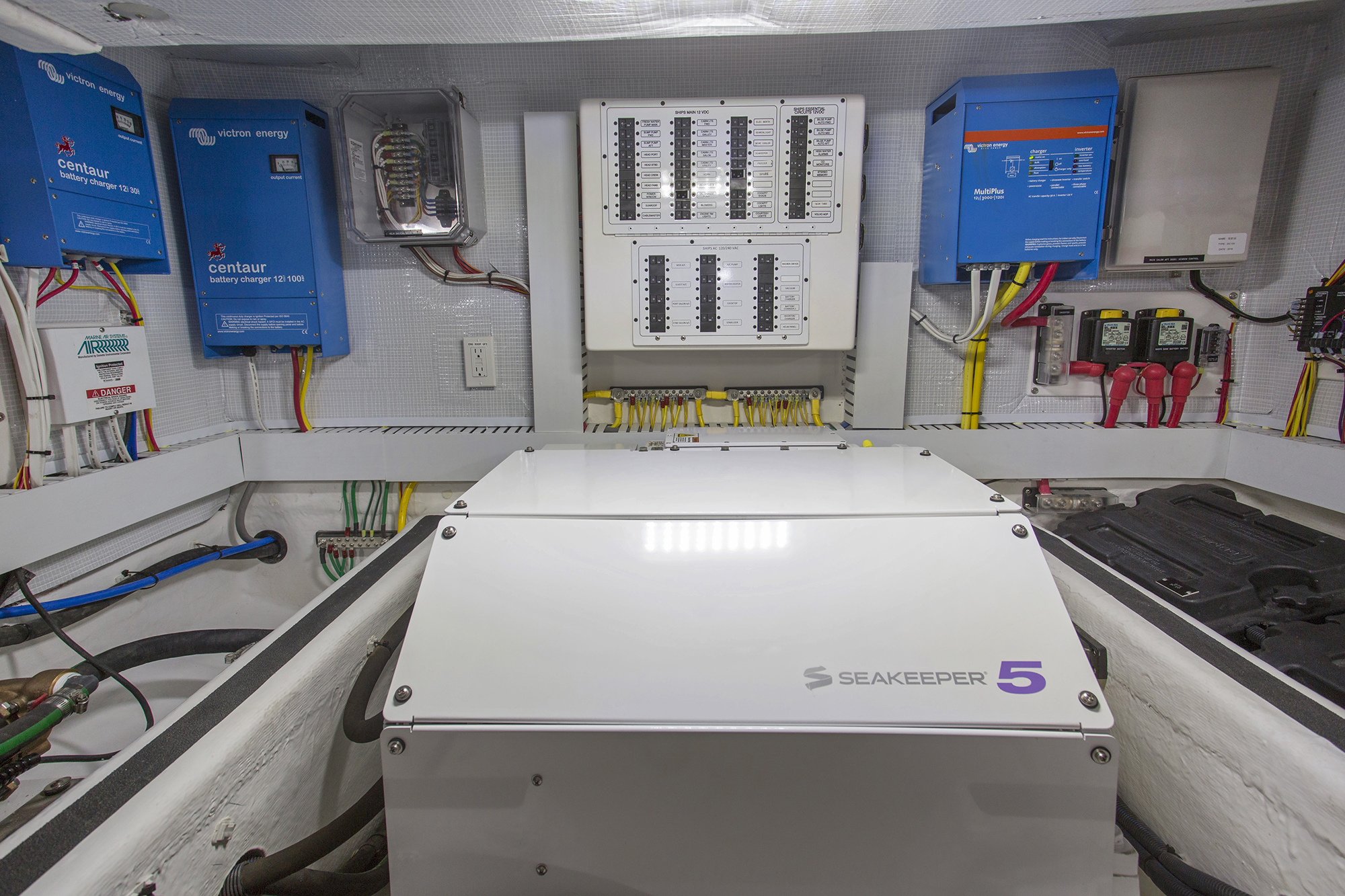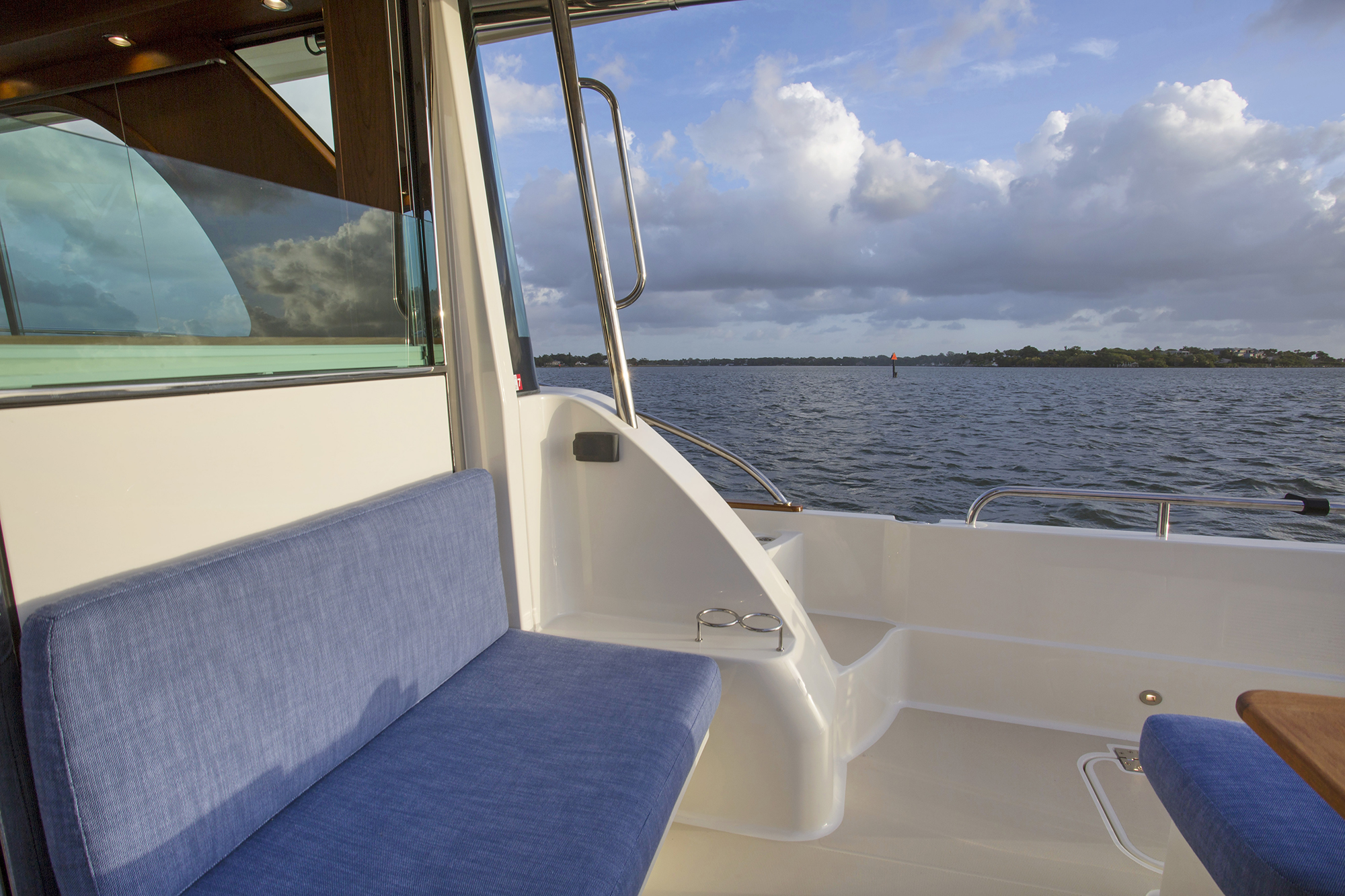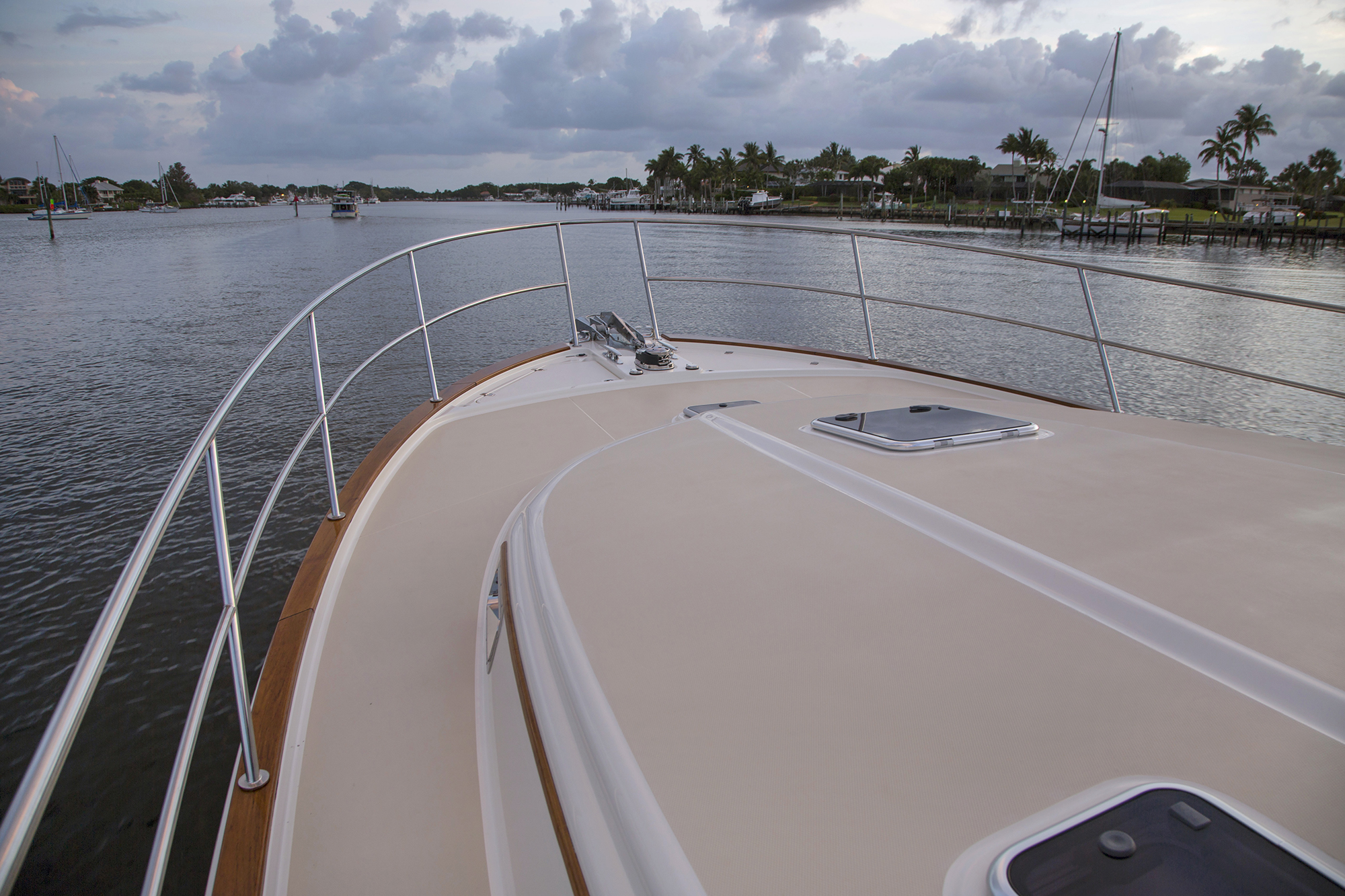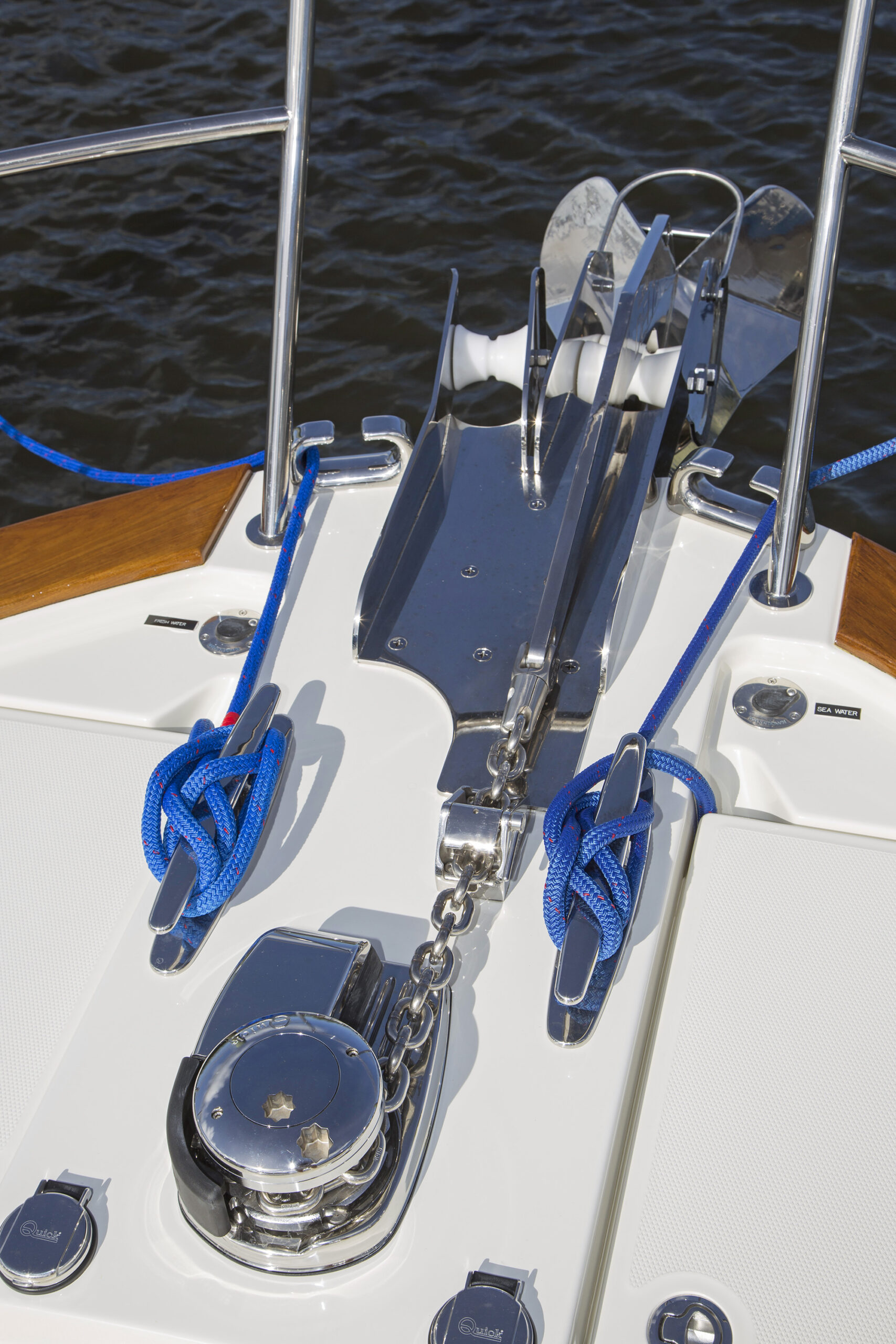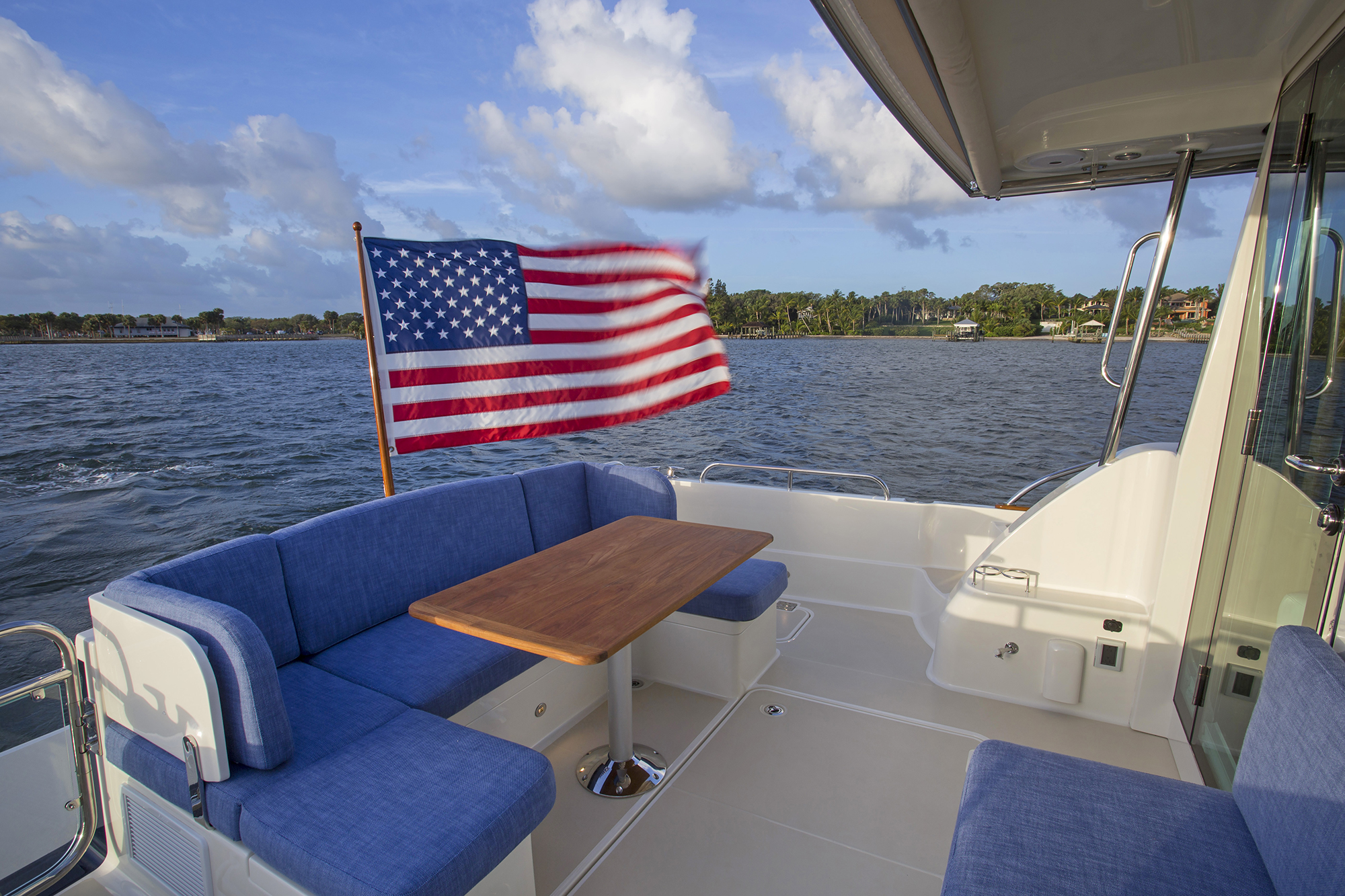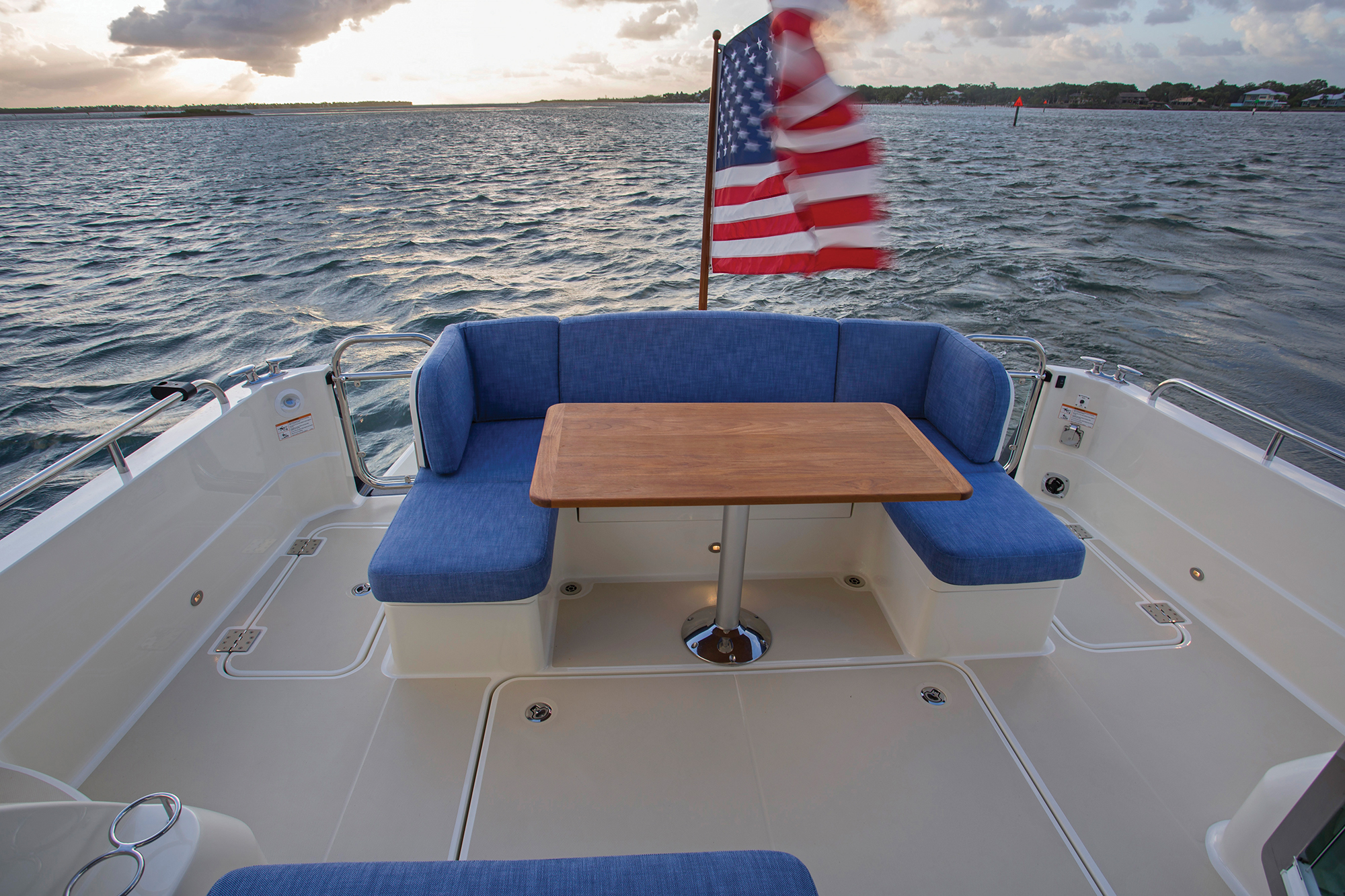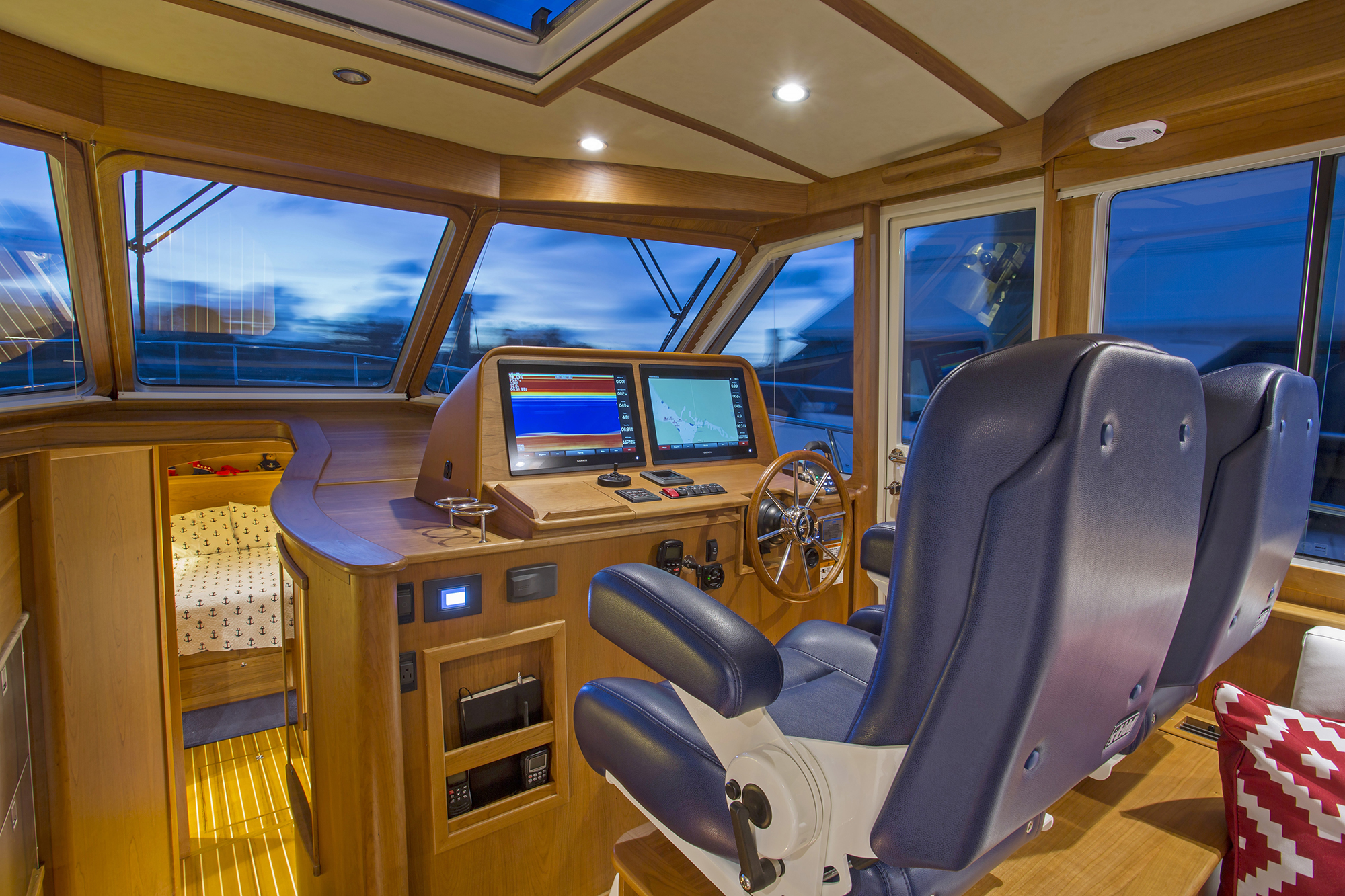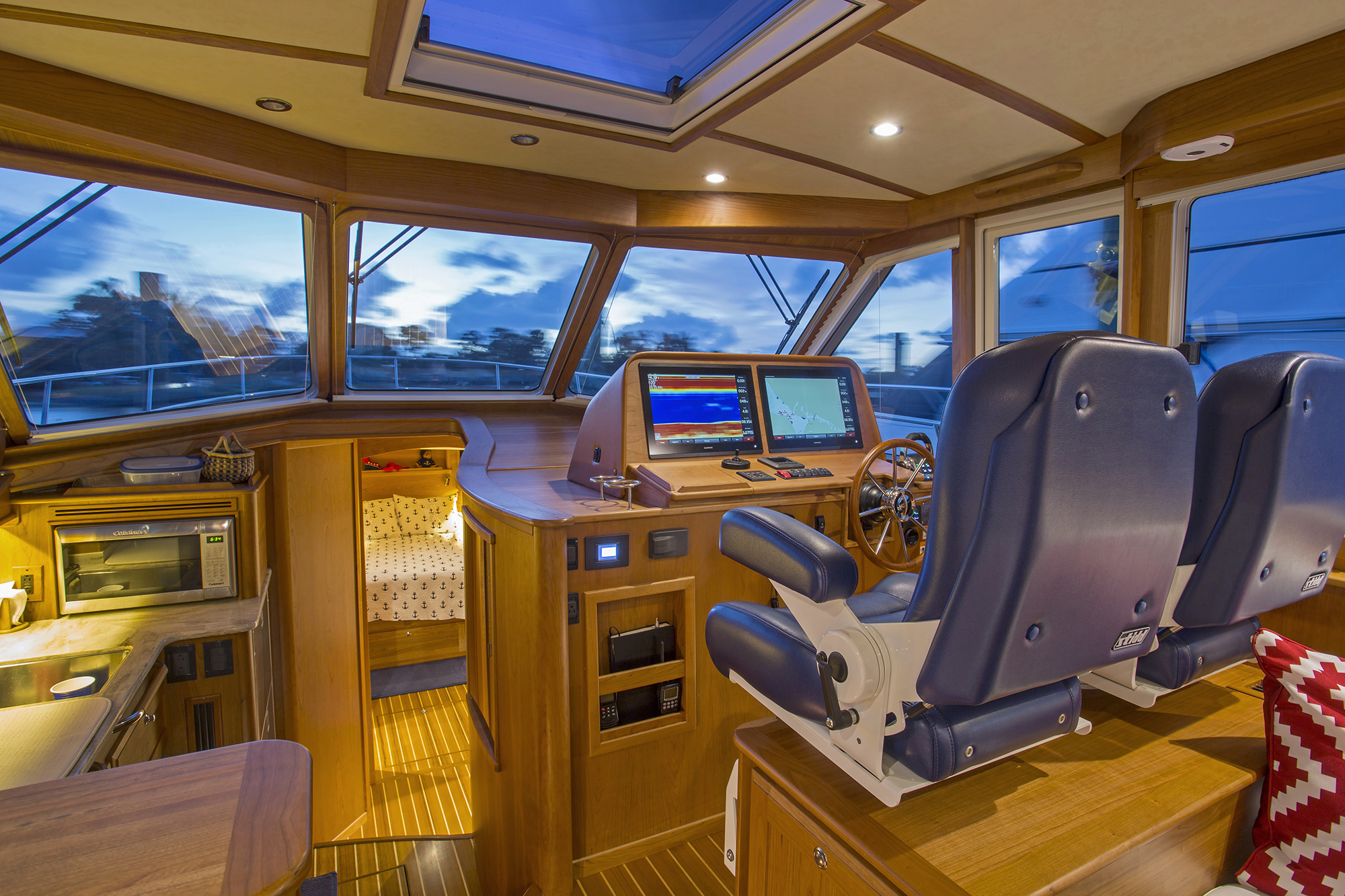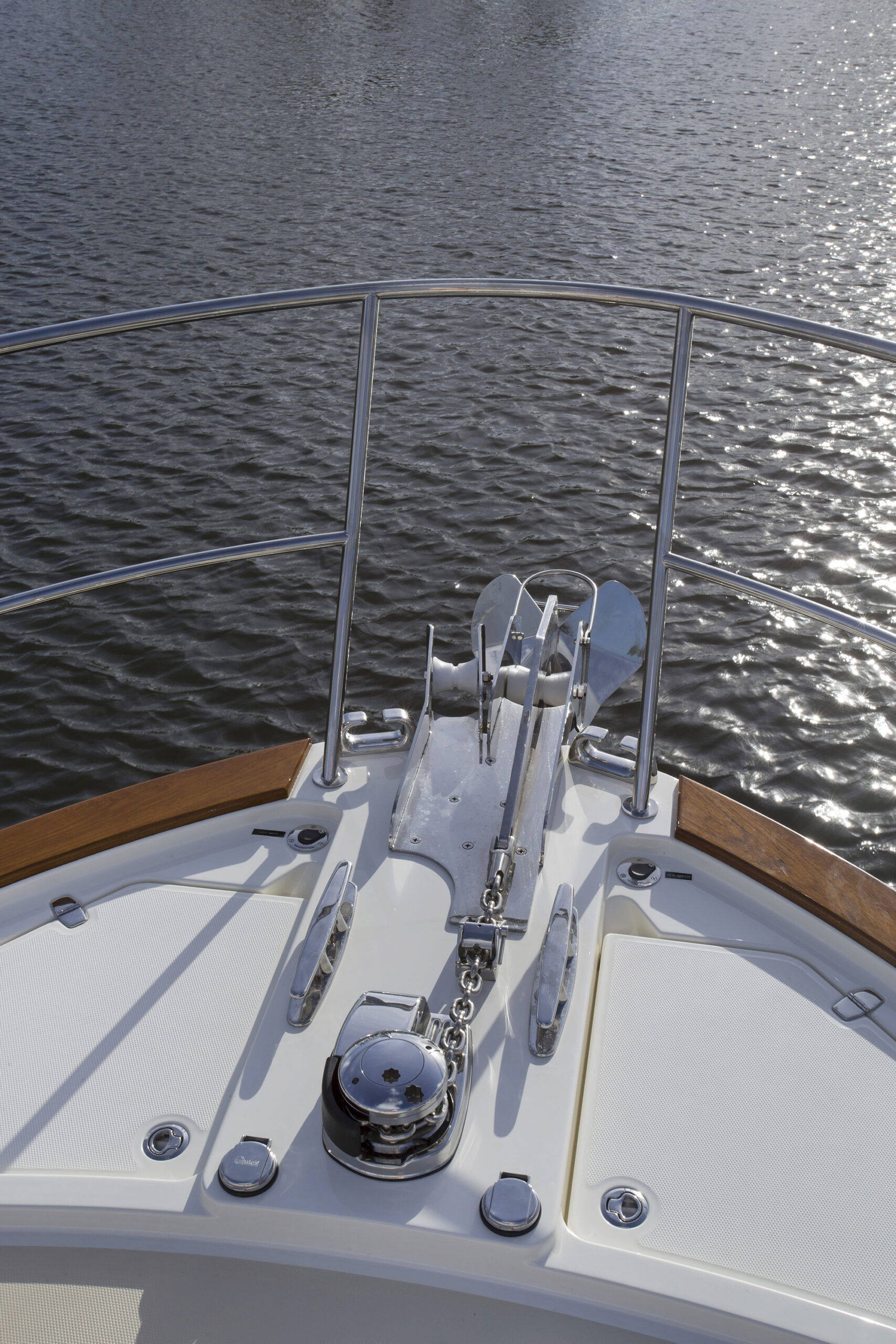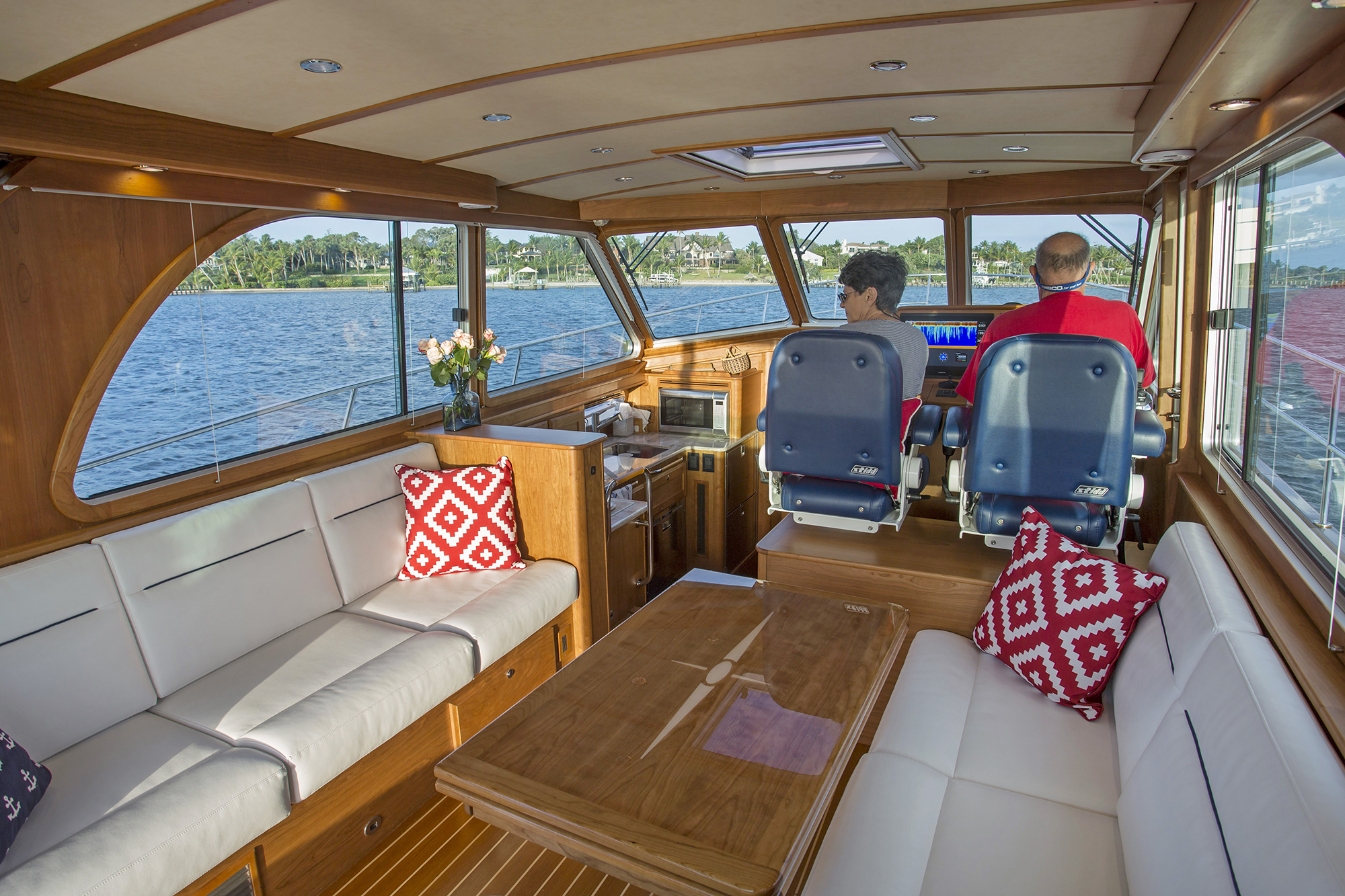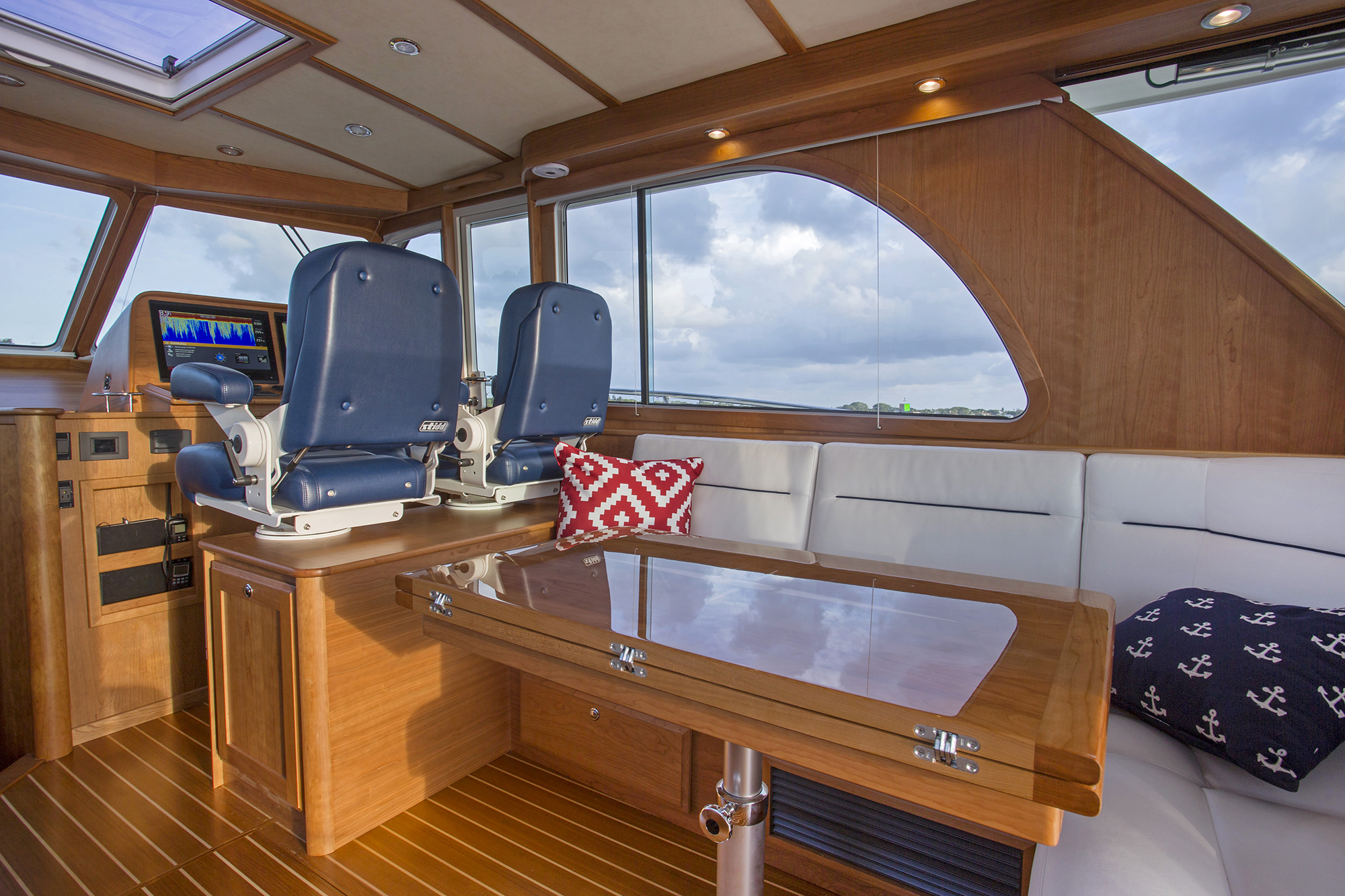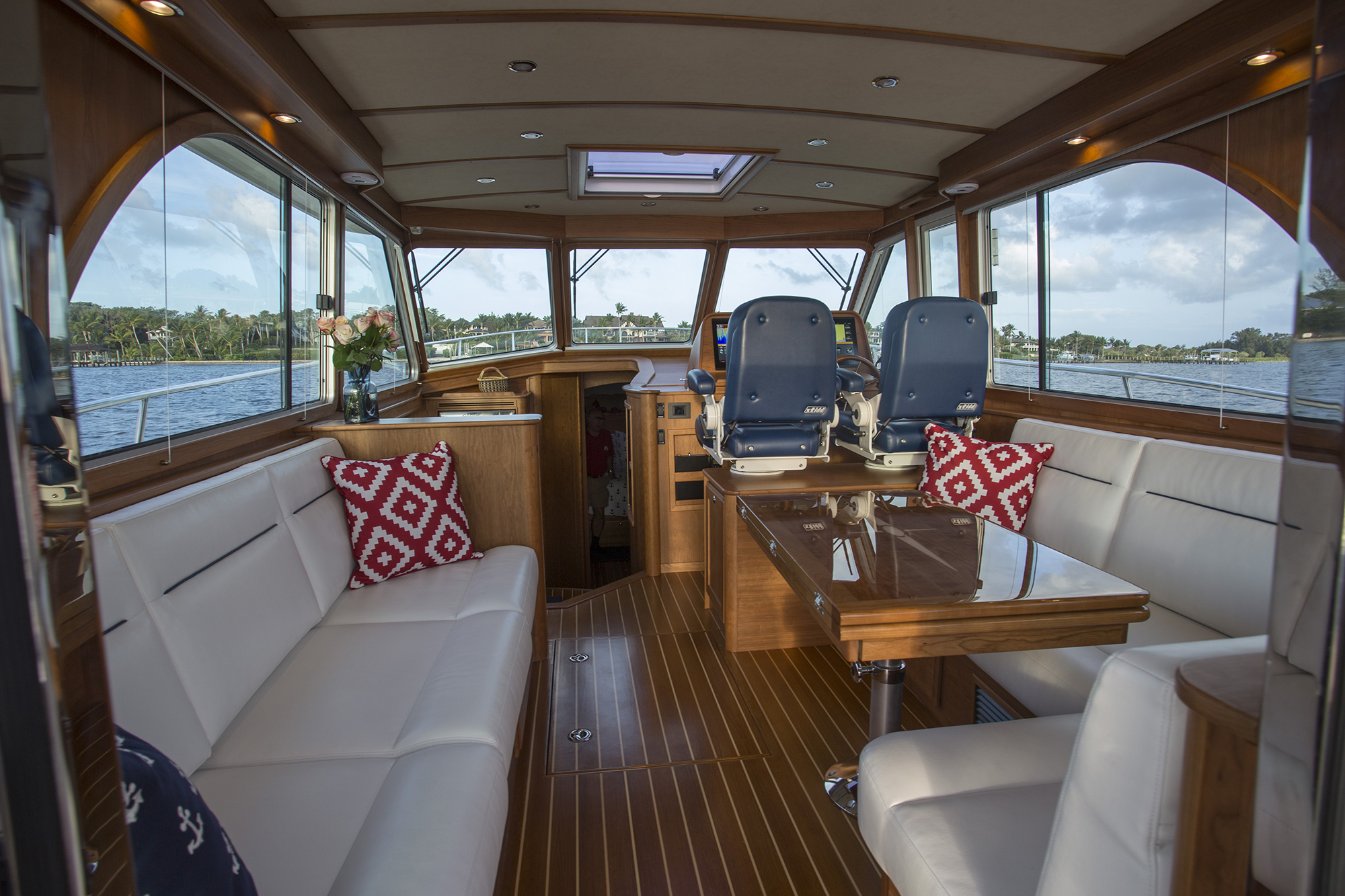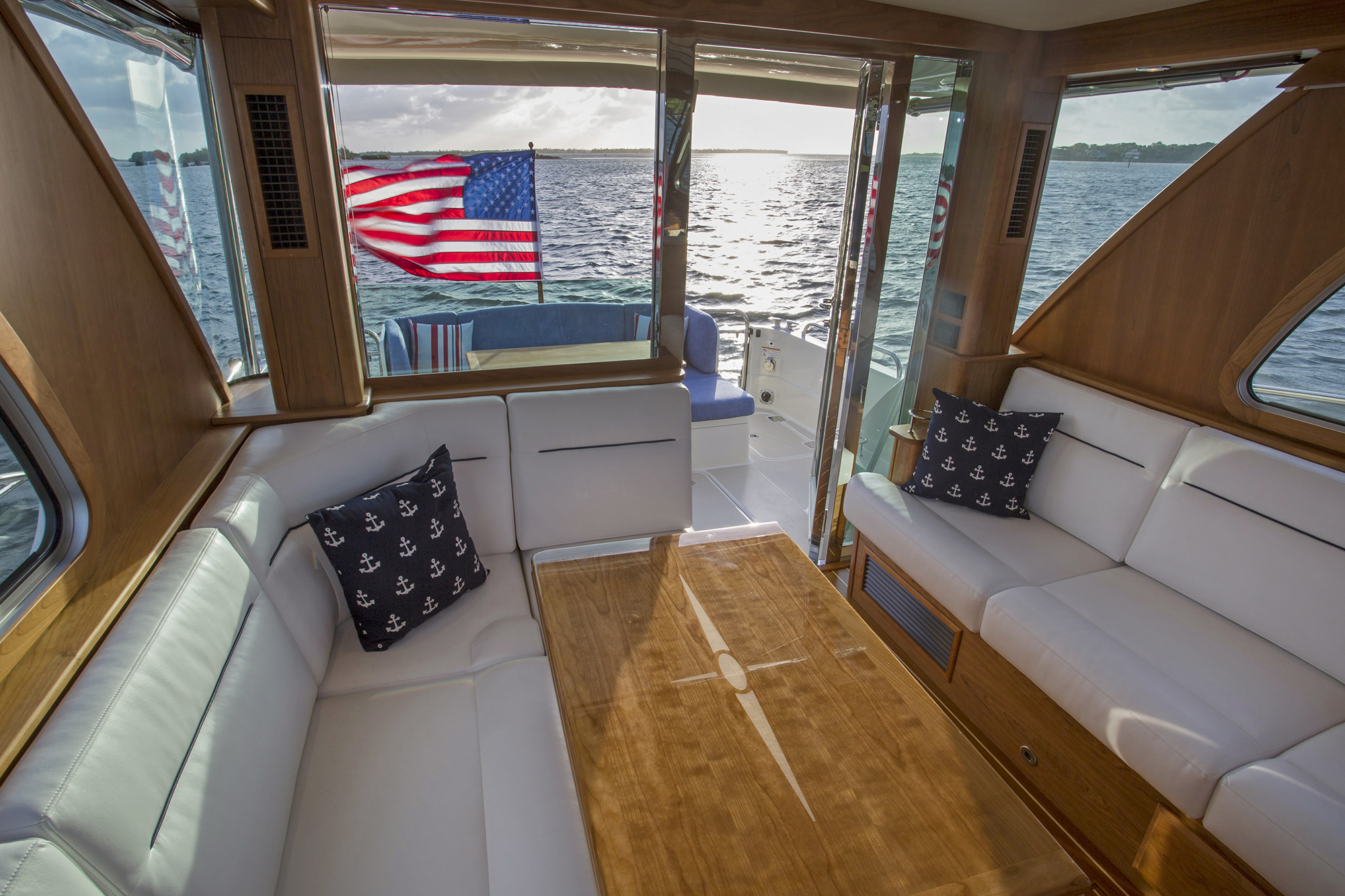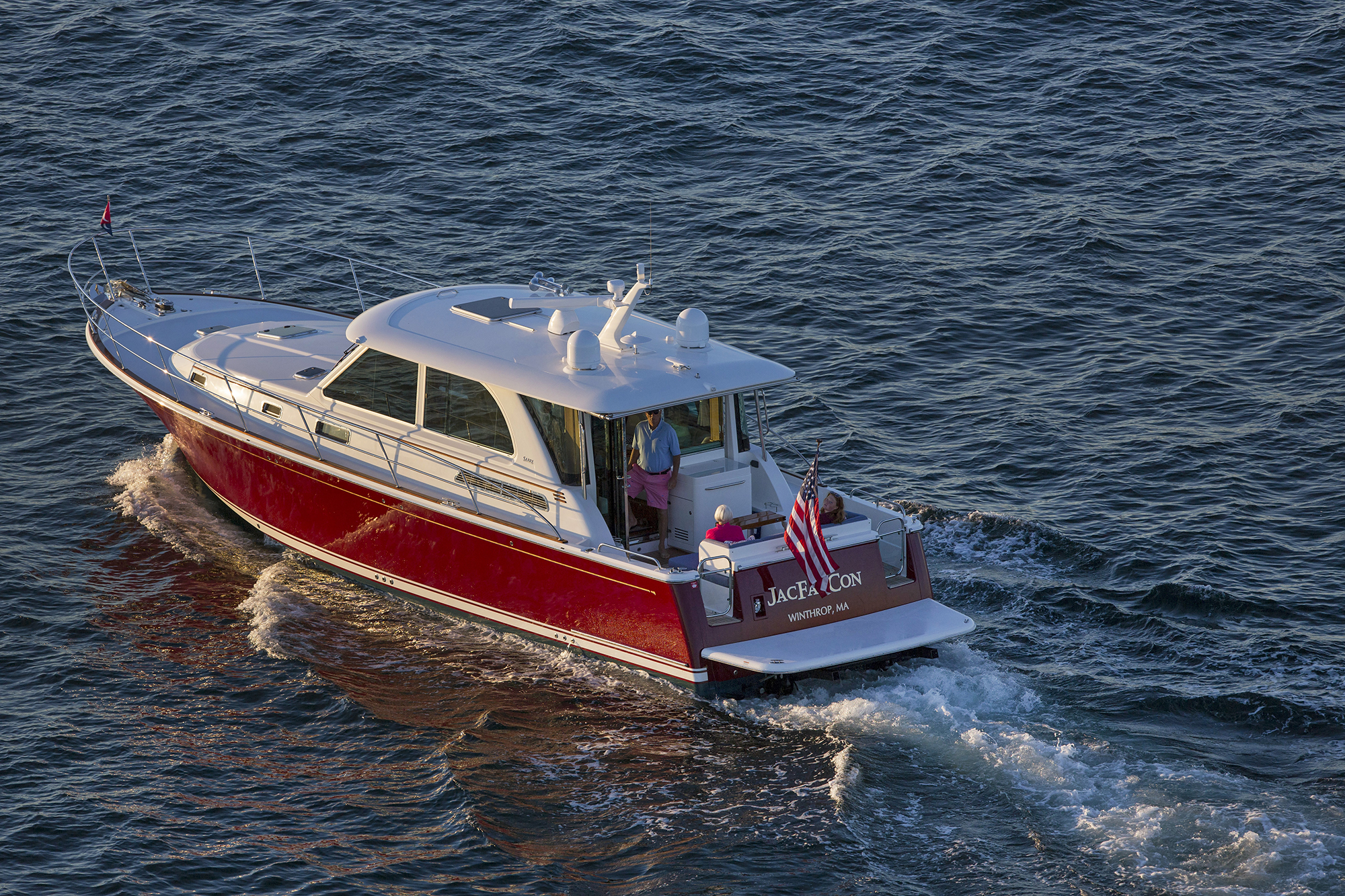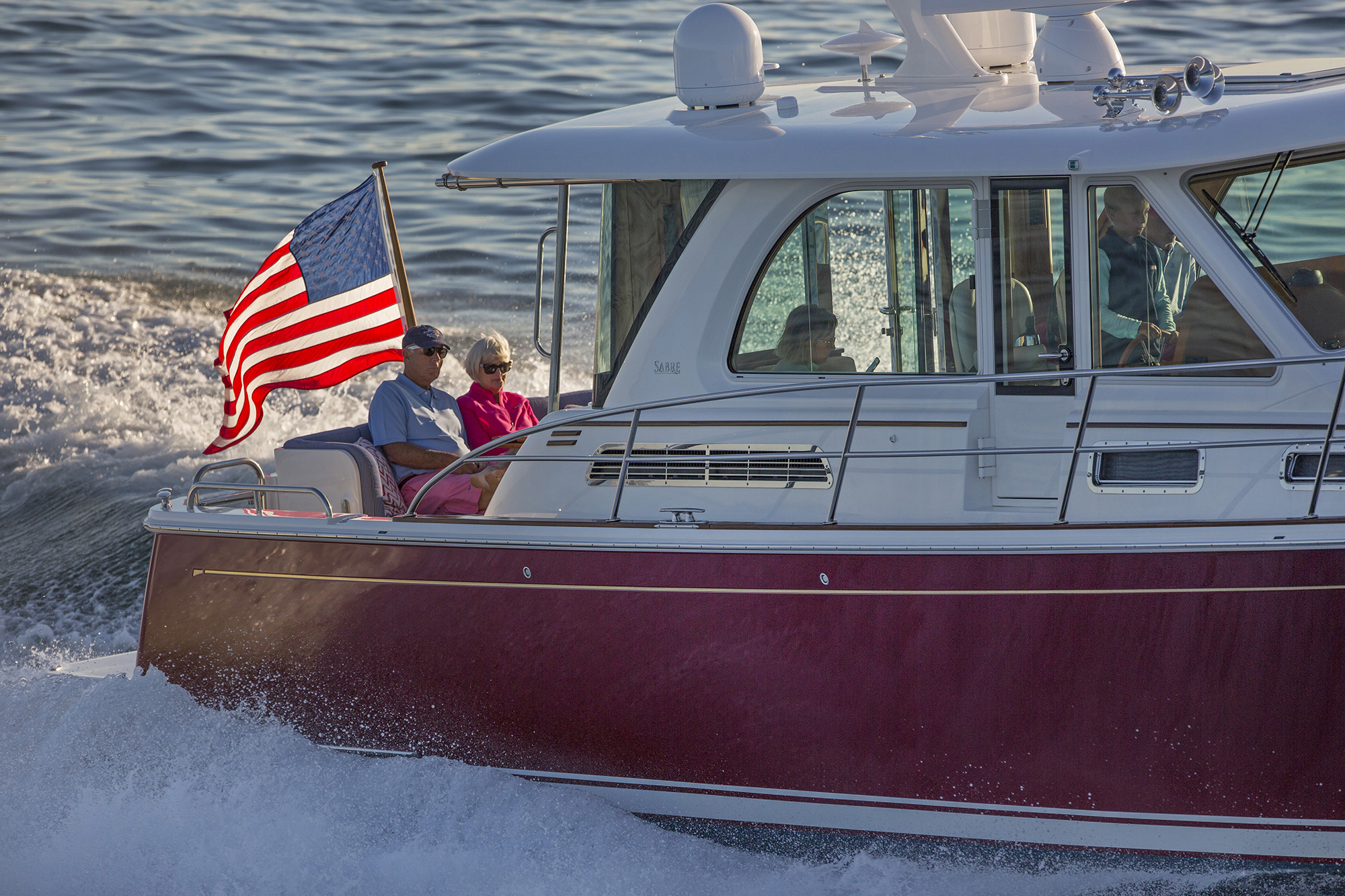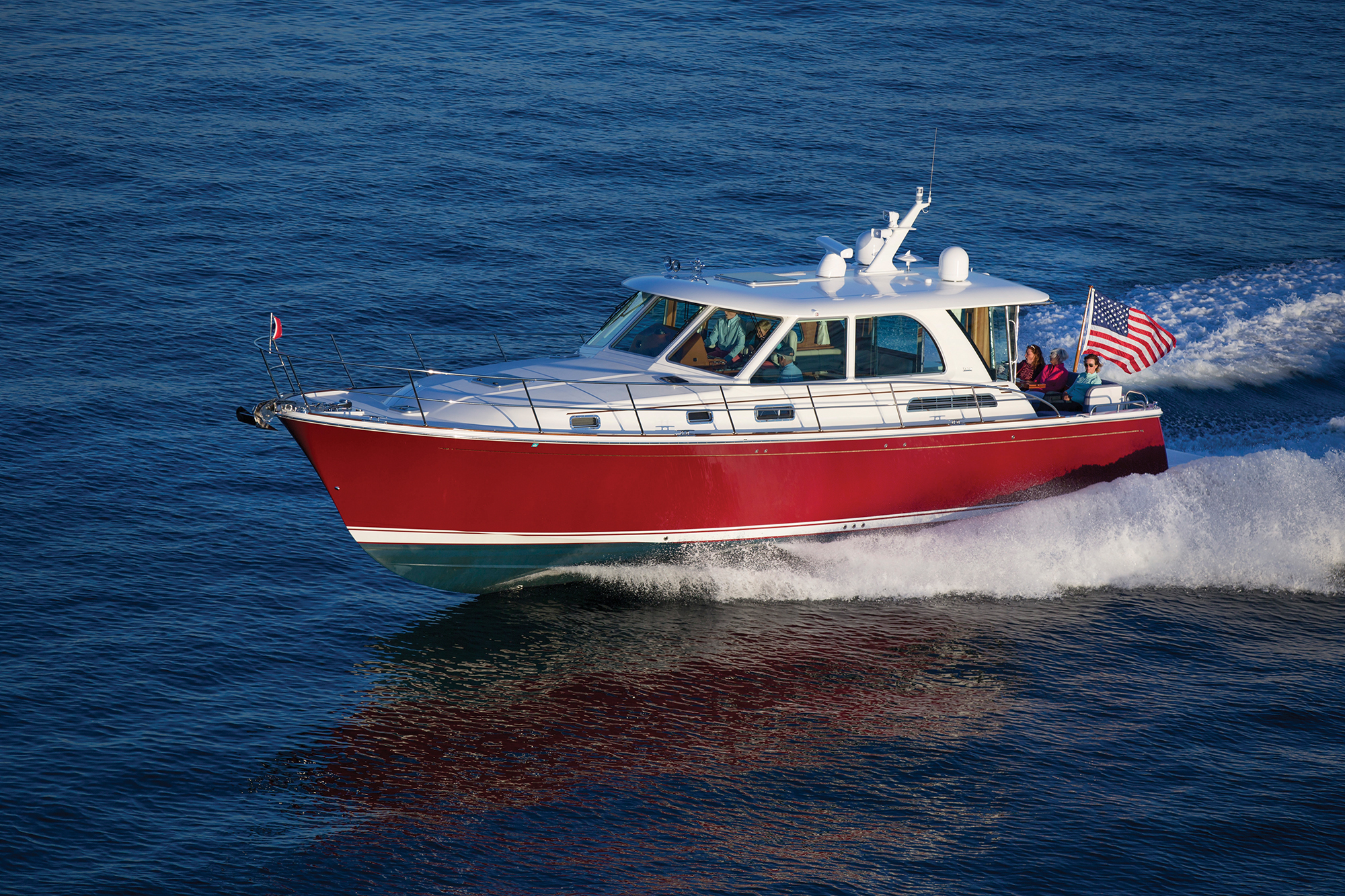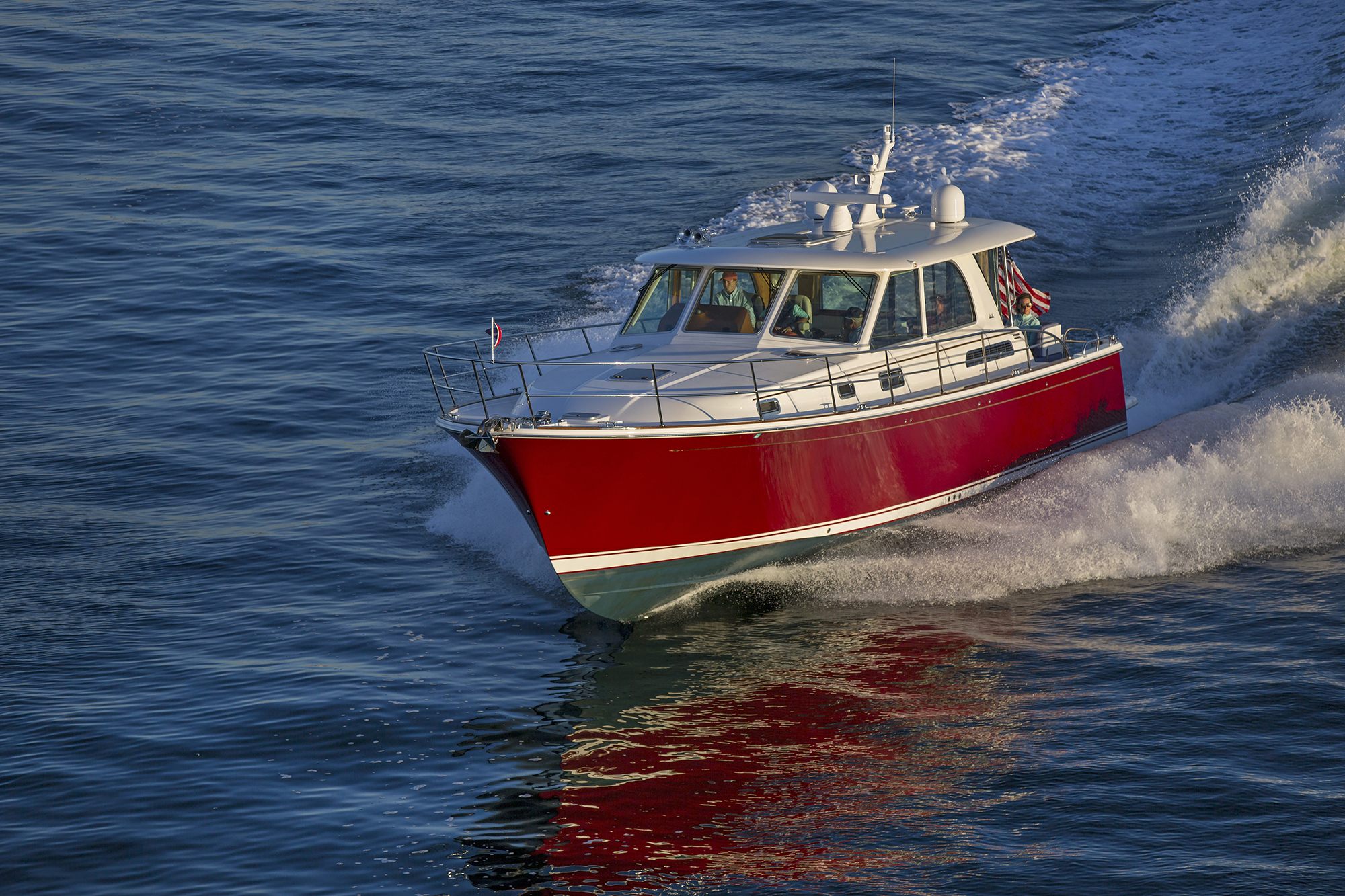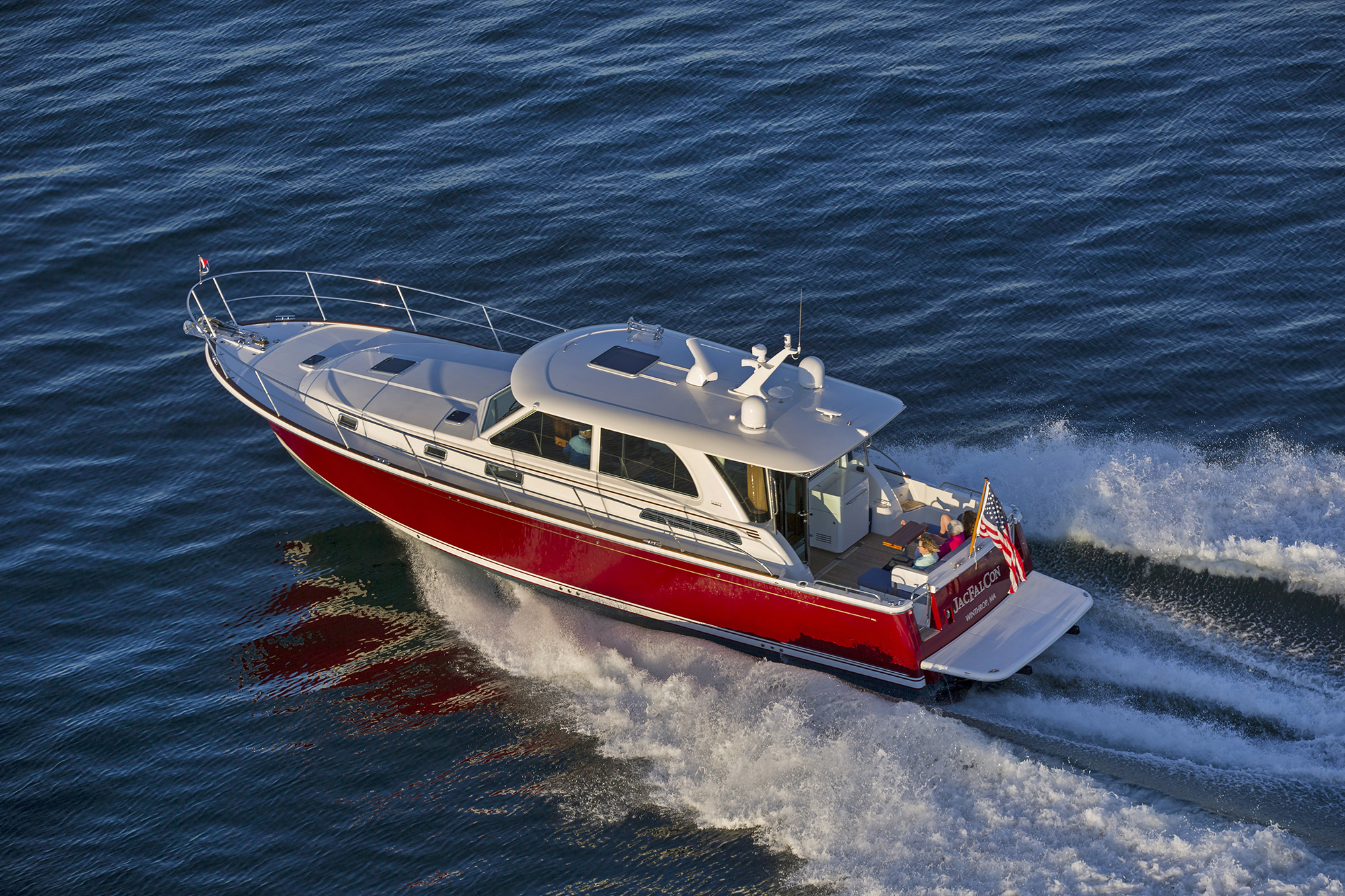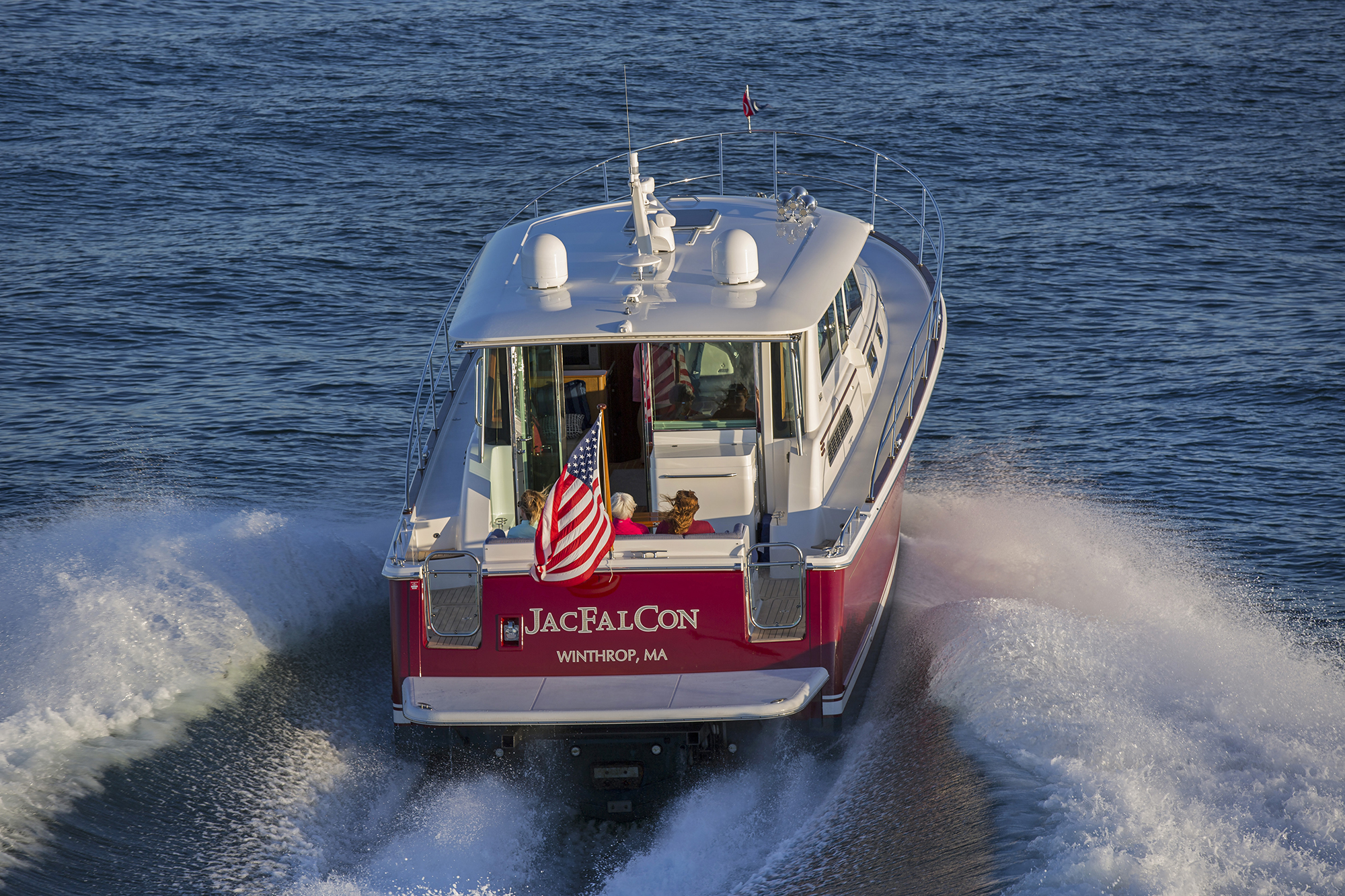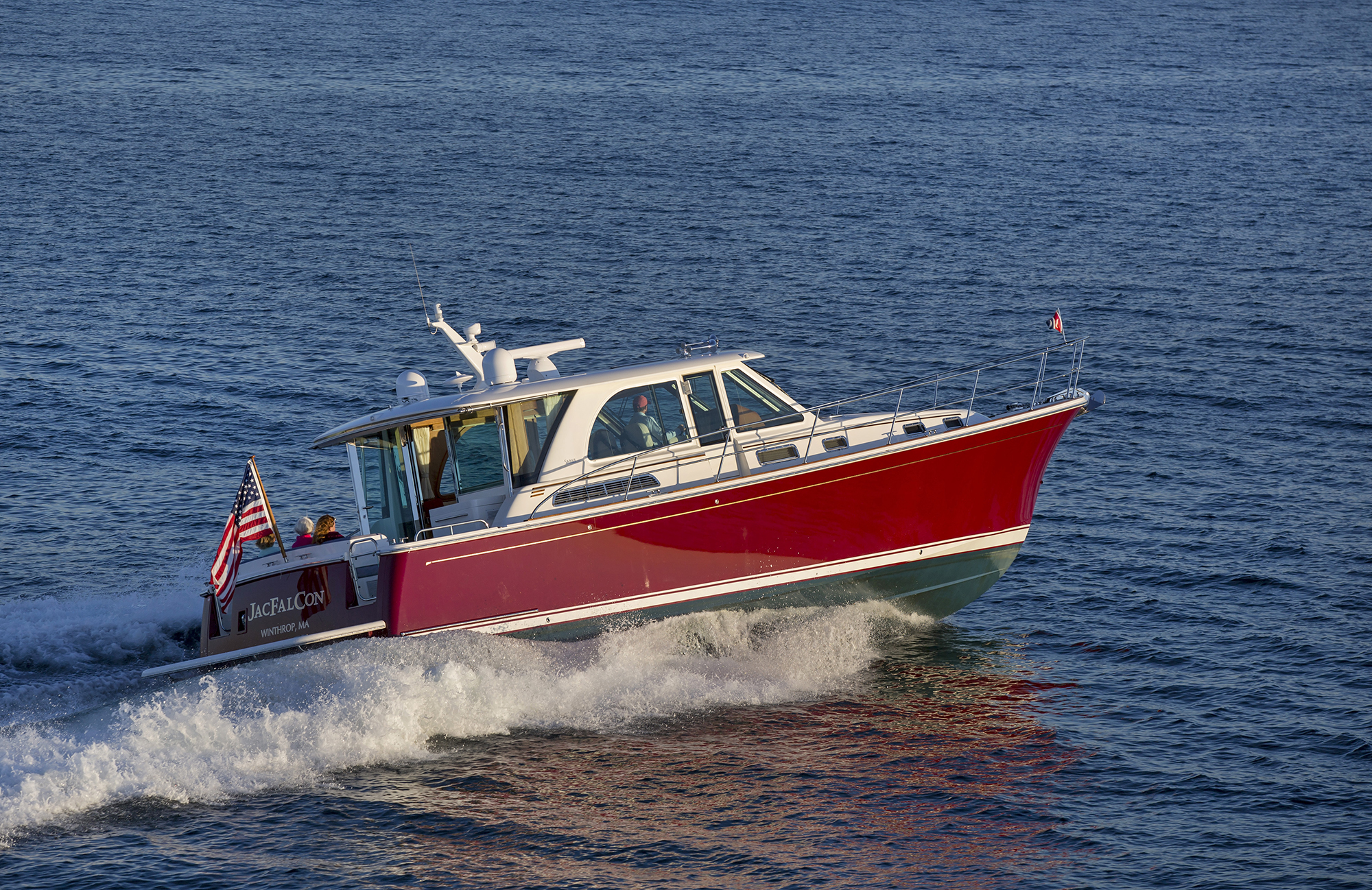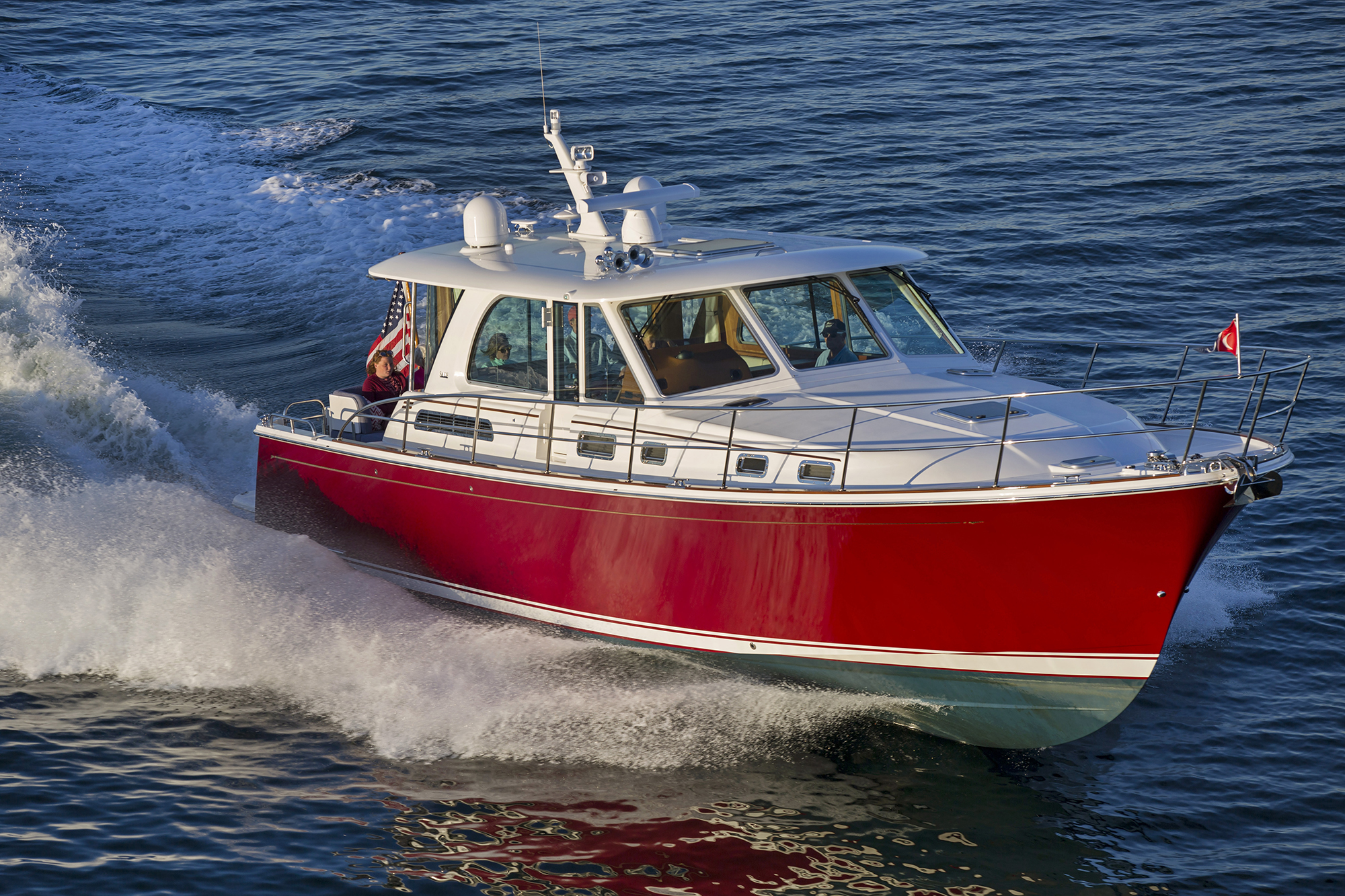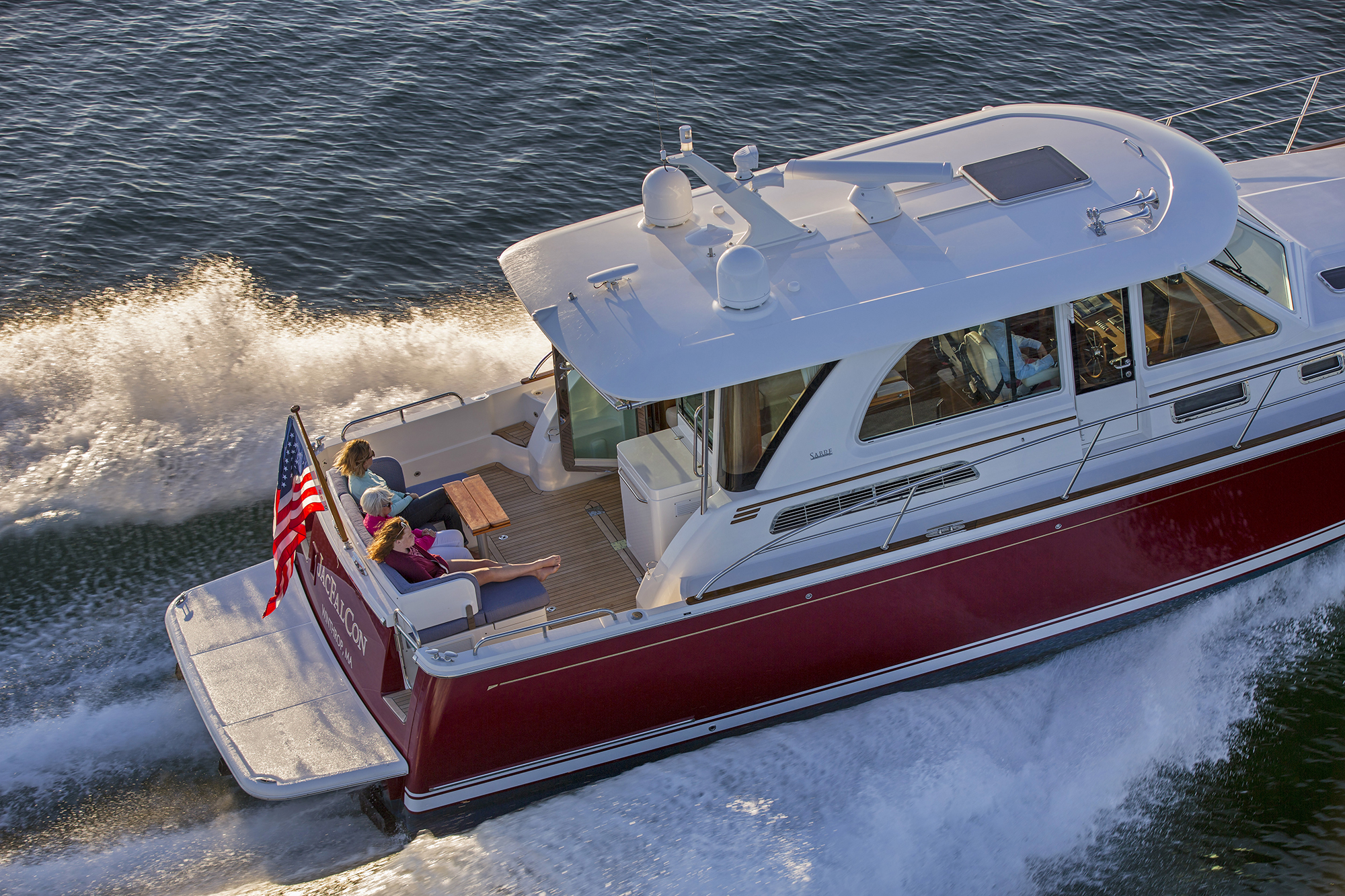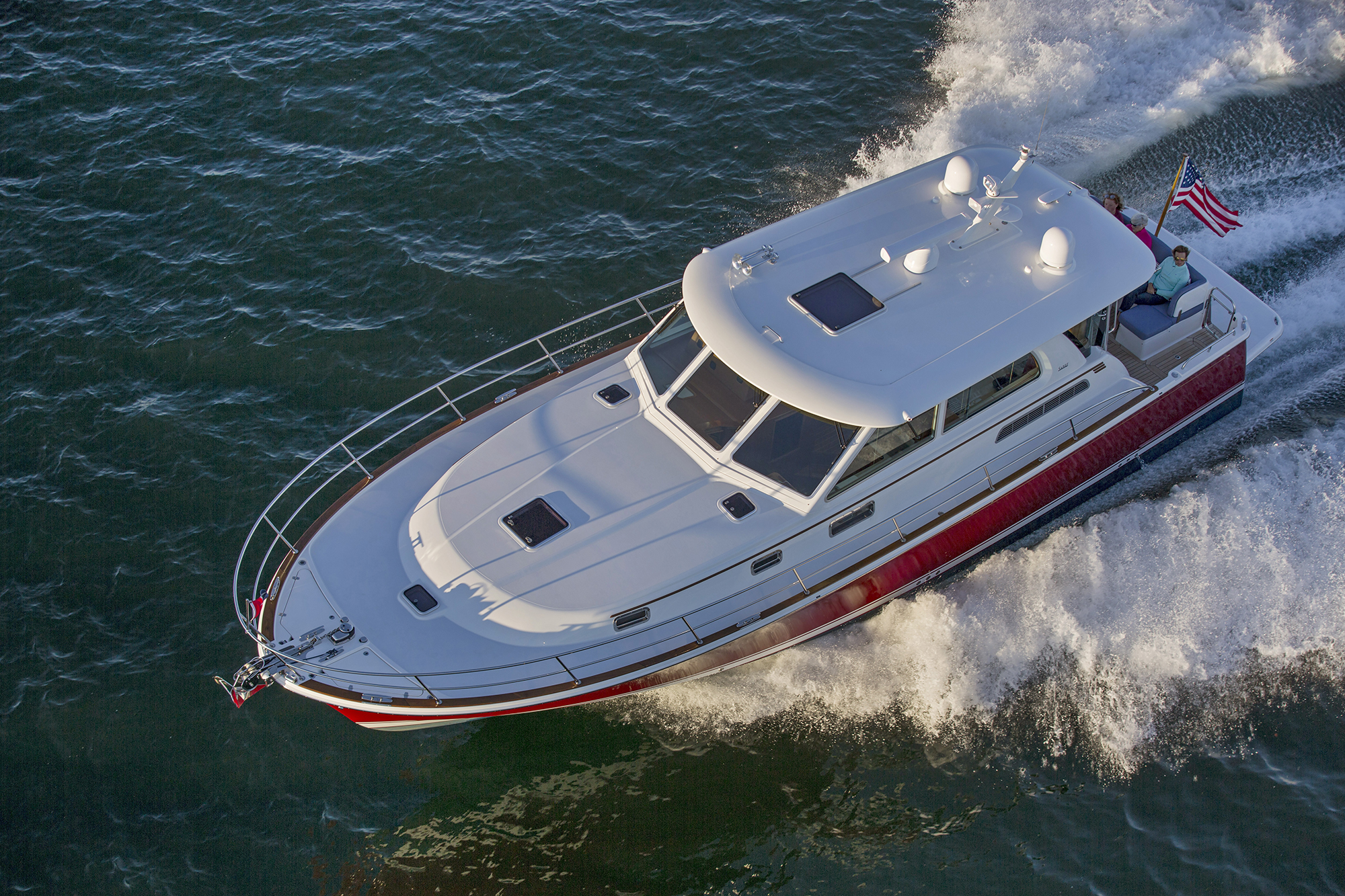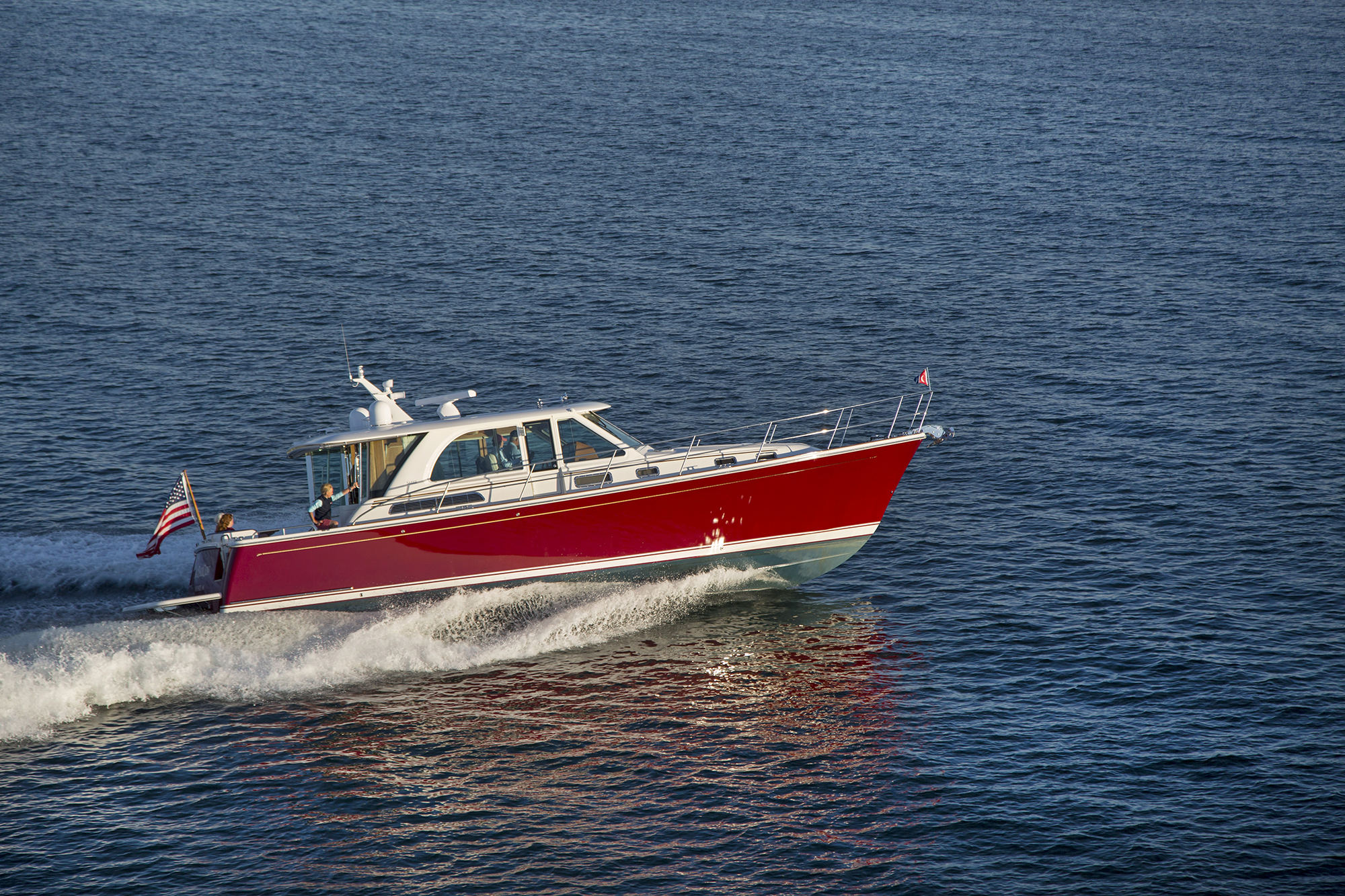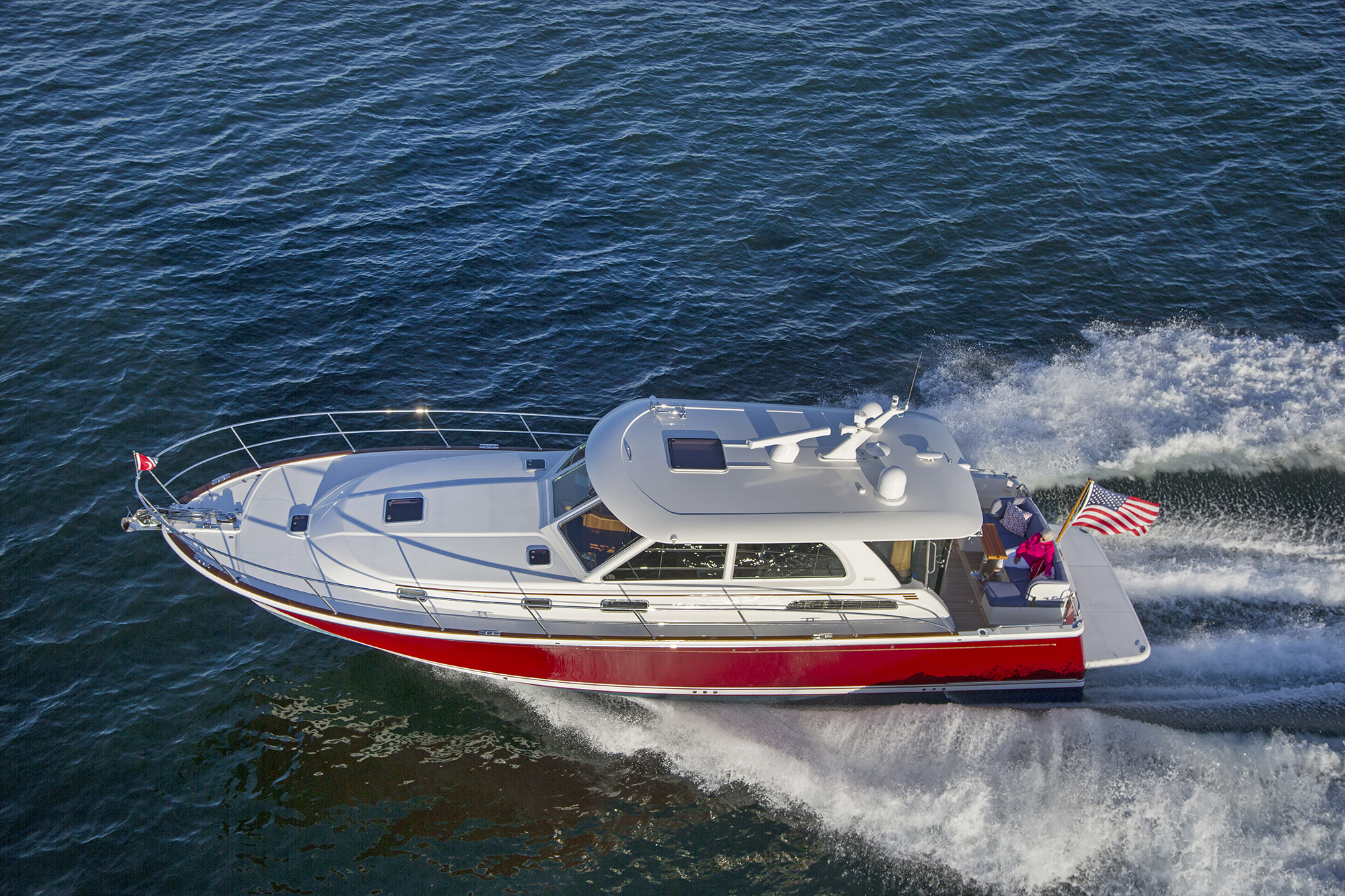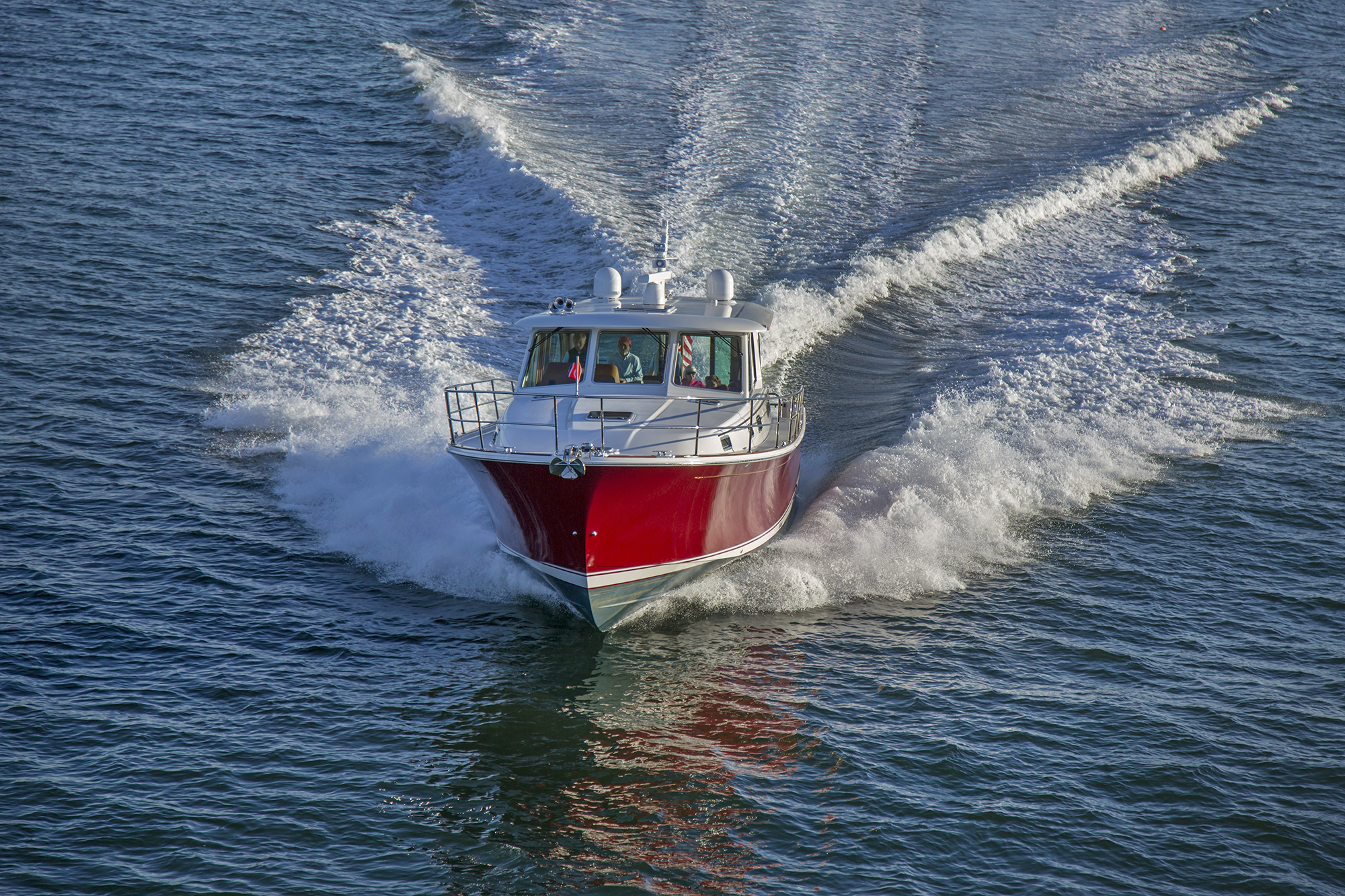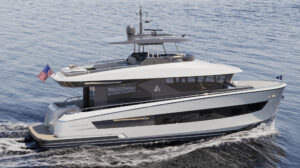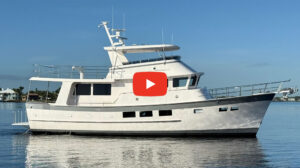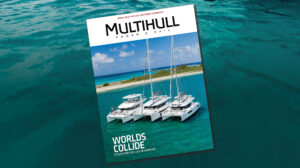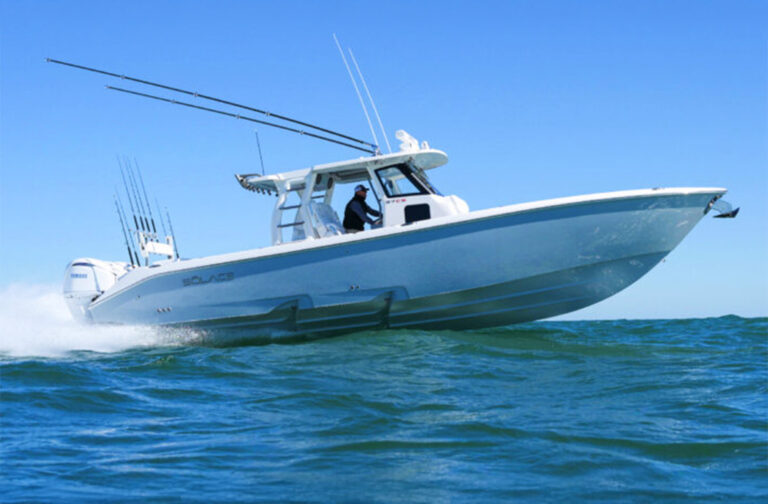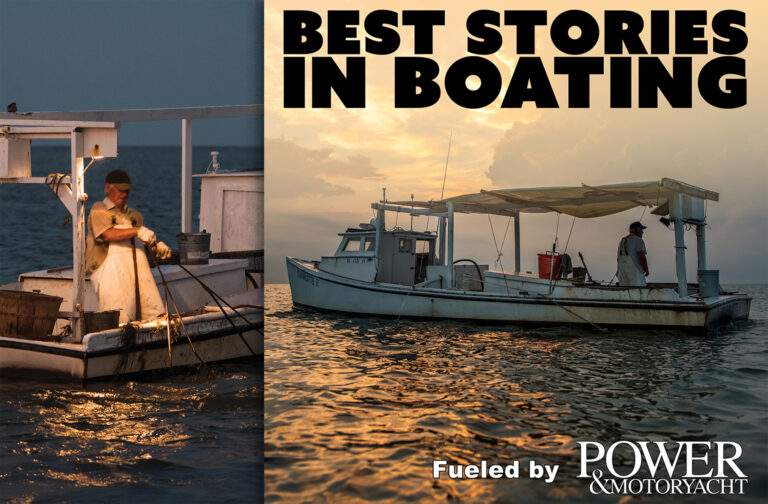Photography by Billy Black
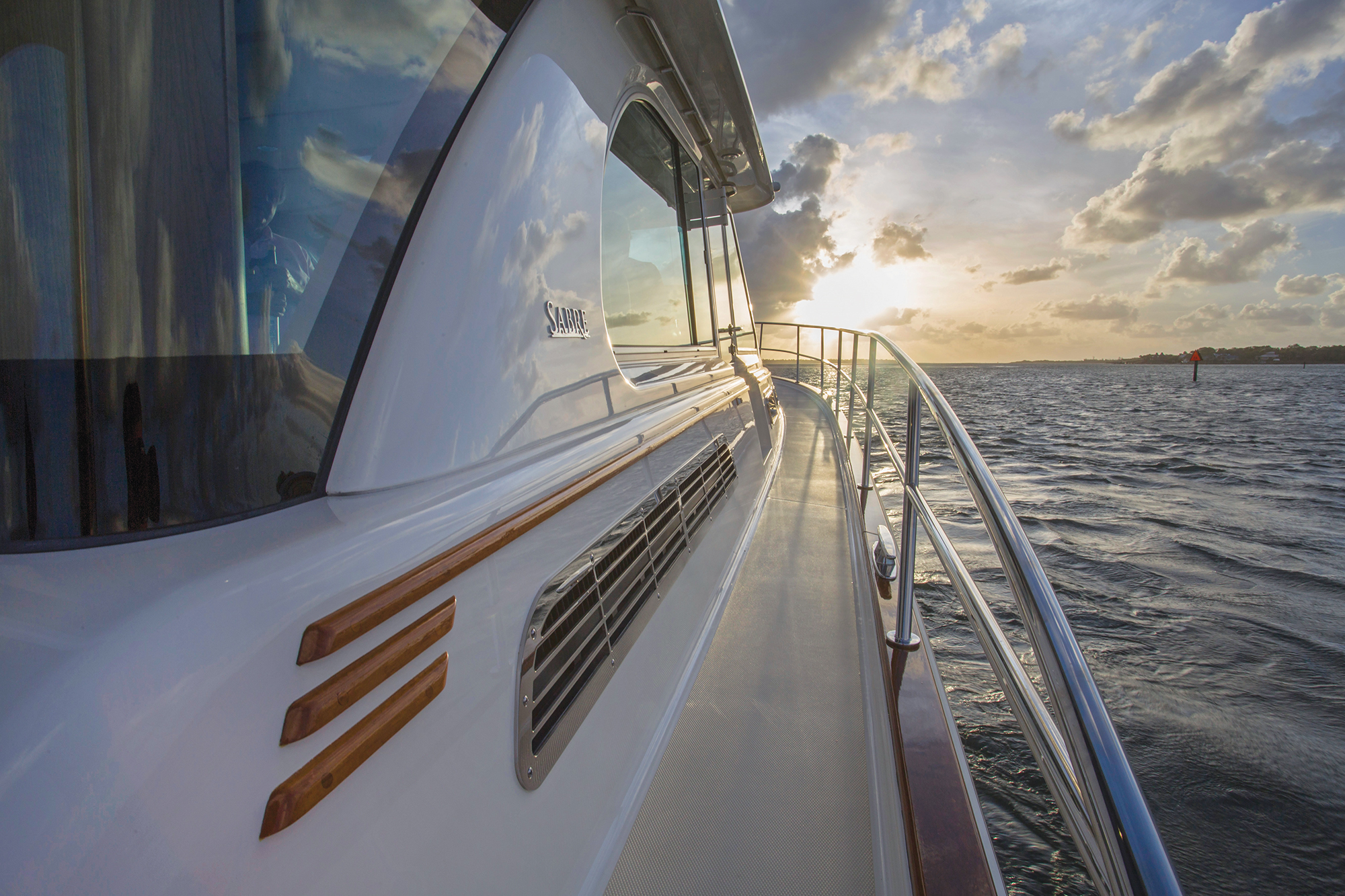
Break From Tradition
Sabre designed the 45 Salon Express down to tenths of a degree of deadrise.
The result blends traditional styling with modern technological advancements.
Stoutly built, intelligently designed, and handsome, the new Sabre 45 Salon Express perfectly fills the gap between the builder’s 42 and 48. Sabre’s design team, true to its Casco, Maine, roots, has relied once again on the traditional New England style—outside and in—that’s made the company successful from the beginning. Call the 45 conservative if you must, but also think of her as reassuringly friendly. Influenced aesthetically by working lobster boats, which have a reputation for seakeeping earned in the often tempestuous waters of the Gulf of Maine, Sabre’s line of motoryachts inspires trust.
Sabre designs its motoryachts from the outside in. The team selects the performance characteristics it wants, and then does the naval architecture to suit. “The hull form drives everything else, not the size of the forward berth at the shoulders,” said Kevin Burns, vice president of design and product development. “We don’t have to change the shape of the hull to accommodate the interior. We don’t have a CEO saying we have to fit three more beds into this hull.”
When developing a line of yachts, a boatbuilder can save money by producing a single design that lends itself easily to scaling up or down. “At Sabre, we don’t have a formulaic, scalable, default hull,” Burns said. “We really take every single project as a white paper.”
Burns and his team gave the 45 a warped bottom—the degree of V changes gradually from bow to transom—that ends in a deadrise of 16 degrees. Their goals were comfort in a seaway, speed, and fuel economy. Sabre has been heading away from the traditional method of developing designs—looking at deadrise angles, quarter-beam buttock lines, etc.—and toward full computational fluid dynamics (CFD). CFD analysis gives the team a better understanding of the architectural elements that can help them achieve those three goals. “A deadrise distribution that might work at 66 feet is not going to work at 45 feet,” Burns said. A lot of the design engineering characteristics in the after sections of the 45 come from Volvo Penta to accommodate the unique requirements of the company’s IPS drives.
The design and engineering teams at Sabre are like conjoined twins, since every decision affects both disciplines. For that reason, “we’ll argue about tenths of a degree of deadrise,” said Glenn Campbell, Sabre’s engineering manager. “We’re like a dog on a leash—we keep going around the tree, trying to review everything; making sure everything is done.”
Sabre builds this boat with E-glass over Corecell foam that’s infused with vinylester resin and vacuum-bagged. The Vacuum Infusion Process (VIP) is the method Sabre used to construct the 45. VIP differs from the proprietary SCRIMP and claims an advantage in the fiberglass-to-resin ratio. The SCRIMP method uses distribution media between the laminate and the vacuum bag to evenly spread the resin laterally across the part. VIP draws a vacuum before introducing the resin and employs the laminate’s layers of fabric as the distribution media. It relies entirely on atmospheric pressure to saturate the part, instead of a pump. The method provides consistency, because the resin and fabric usage doesn’t change.
Sabre set a goal of 35,000 pounds for the 45’s dry weight, and that’s exactly what hull No. 1 weighs. “We’re not going for the lightest possible part,” Campbell said. “We’re going for a part that weighs what we want it to weigh.” The 45 has a gelcoat finish. The company prefers gelcoat over paint because it provides a thicker coating, which makes touchups easier to repair. Vacuum-bagging requires a great deal of care to prevent print-through—when the fabric’s weave pattern shows beneath the gelcoat. “We’re striving for automotive [quality finish] but aren’t there yet,” Campbell said.
Sabre’s efforts appear to have paid off. I recently met the boat, Burns, and Campbell one early afternoon at Newport Marina on Lee’s Wharf in Newport, Rhode Island. Tied up at the end of a finger float, her traditional good looks stood out in a sea of trendy boats nearby. As most of us know, boats make lasting first impressions. The ones that feel right do so within a few minutes after we meet them. The Sabre 45 Salon Express felt right.
Like a firm handshake, the cockpit welcomed me. Its U-shaped settee hard against the transom seemed like a perfect spot for breakfast just after sunrise in a favorite anchorage, or a nightcap under the stars. A two-person bench set against the after bulkhead on the starboard side ought to be the best perch from which to let the 45’s wake mesmerize you. The large hatch on centerline opens the cockpit sole to the engine room. Finished in white gelcoat and beautifully organized, it encourages owners to spend all the time they need for routine checks and maintenance. It should please the mechanics at your favorite yard, too.
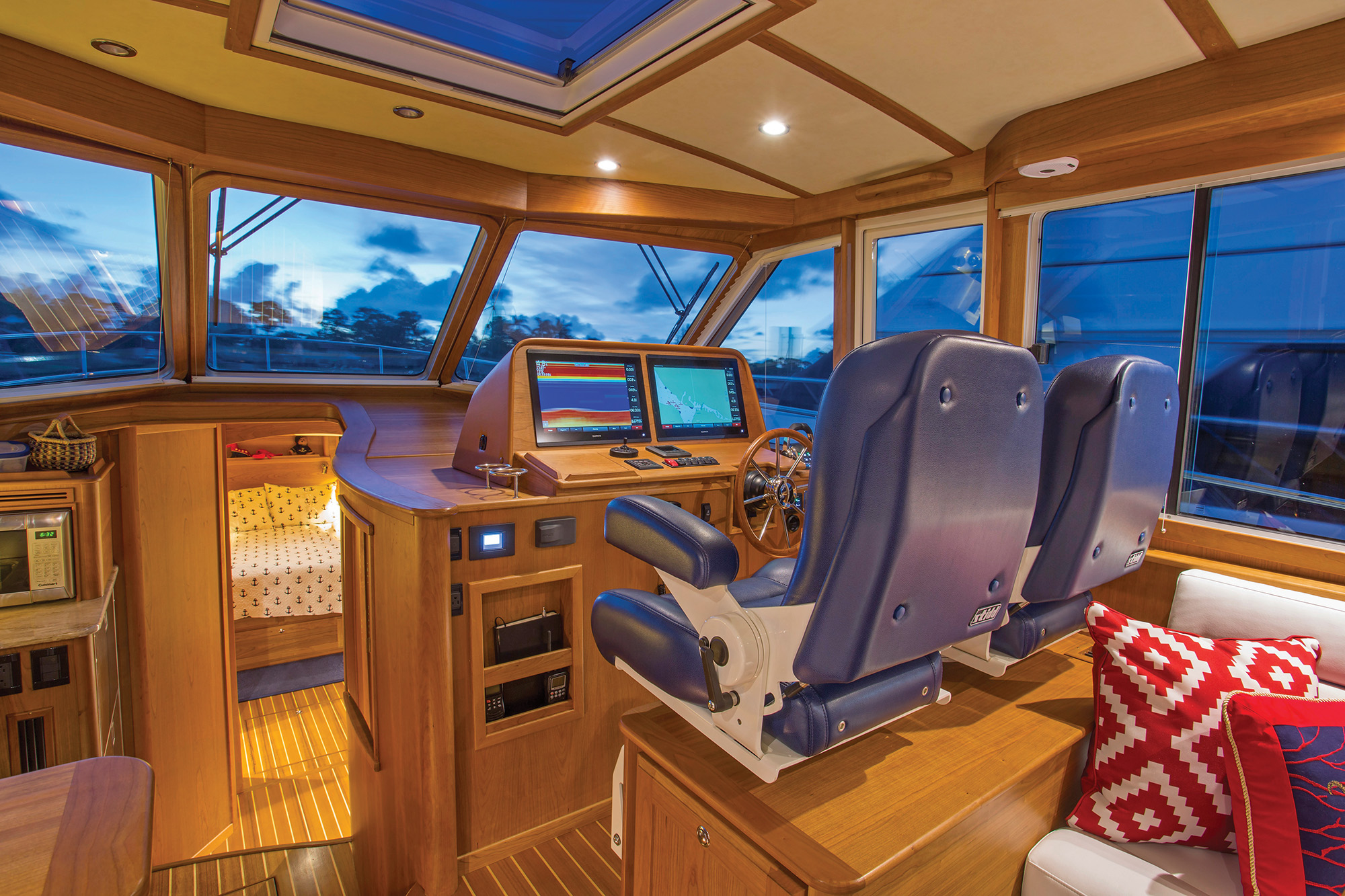
A polished stainless steel and glass door opens onto the salon/pilothouse. An abundance of natural light streaming through acres of glass sets the cherry joinery aglow. Settees, a straight bench on the port side and an L-shaped one opposite, form a cozy space for conversation, dining, and entertainment. At the touch of a button, the TV rises from a cabinet at the forward end of the portside settee. High-gloss varnish, which seemed deep enough to drown in, covers the high-low table at the starboard settee.
Two Stidd seats face the elegant cherry dashboard and teak-rimmed steering wheel. Two 17-inch Garmin glass-bridge displays stare back at you and blend seamlessly with the varnished woodwork and comprise the Glass Cockpit, an integrated autopilot and engine-monitoring system that’s the result of a partnership between Garmin and Volvo Penta. Outboard of the helm, a swing door opens onto the side deck, giving the helmsman an easy way to help with lines while the IPS holds the boat on station.
Although the galley is two steps below the bridgedeck (Sabre refers to it as a half-up galley), it basks in the light from the pilothouse windshield and side windows. Solid-surface countertops surround a stainless steel sink and two-burner induction cooktop. The galley also has a two-drawer refrigerator, single-drawer freezer, convection microwave, and lockers for dry goods, flatware, dishes, and glassware.
Two easy steps below the galley, the master stateroom fills the forepeak with a big berth on centerline, a cedar-lined hanging locker, four-drawer bureau, cabinets outboard of the berth, and the head. On the starboard side amidships, the cozy double stateroom welcomes overnight guests. The twin berths push together to form a single. This stateroom shares a head with the rest of the boat. A solo live-aboard, or antisocial owner may want to convert this space to an office.
Sabre’s traditional stick-built interior rests on a molded composite sub-structure. This construction method adds stiffness to the hull and permits the variety of joinery that gives this interior its ambience. All the cabin soles are teak and holly. Through a hatch cut into the salon’s sole, you can enter the 45’s piéce de résistance—a cavern of nicely finished space, which an owner may devote to a laundry room, additional refrigeration, or stowage. This area can even house the optional Seakeeper gyro stabilizer.
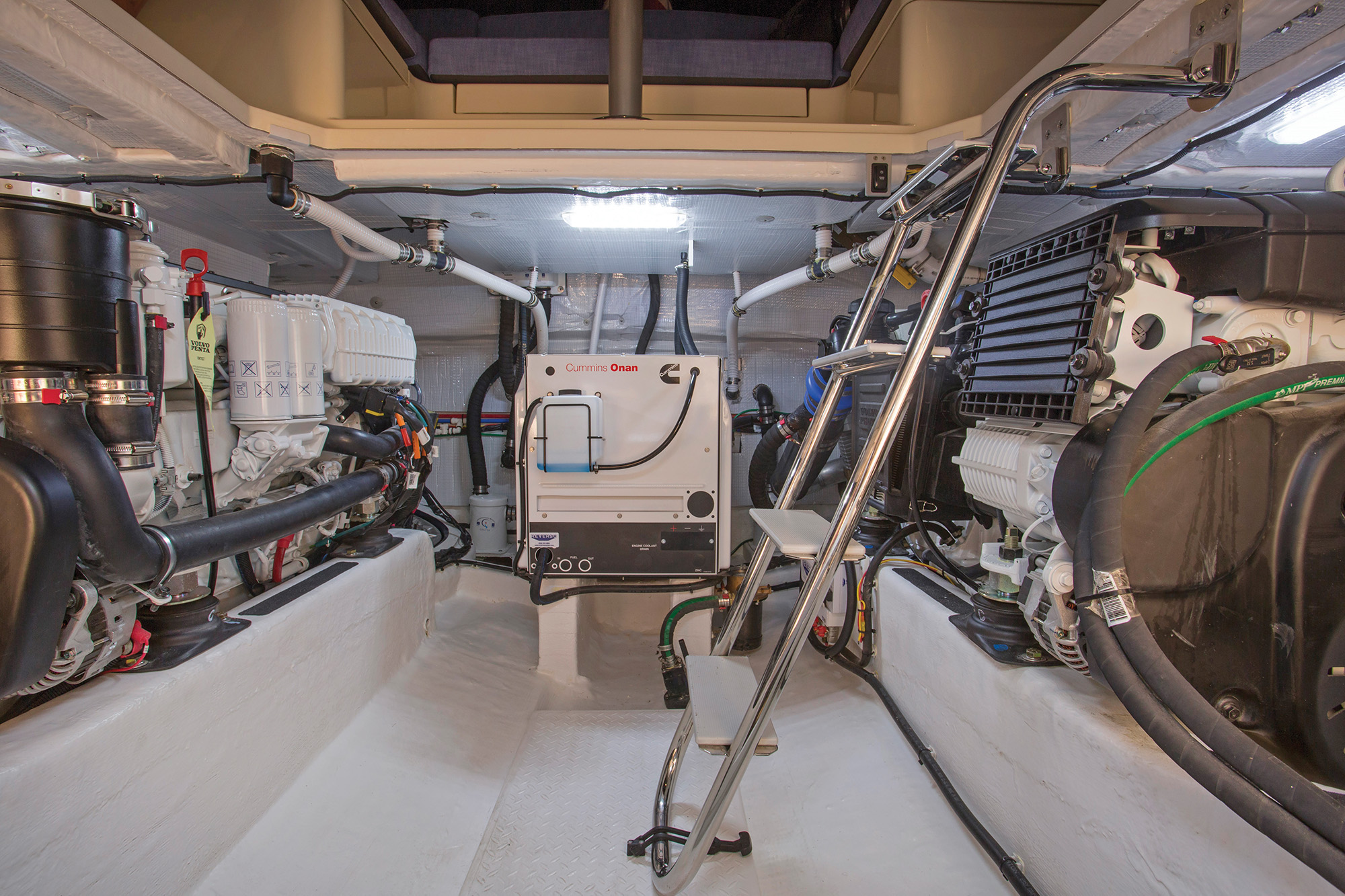
Under way in Narragansett Bay, the wind was light out of the south/southwest, and the temperature flirted with the mid 70s. The landmasses along the East Passage between Newport and Portsmouth torture the wind to their will, surprising the helmsman with changes in direction and velocity. We encountered a light chop in one area, and 3-foot seas in another. These minor annoyances didn’t disturb the Sabre’s composure. Steering remained light and positive, and Volvo’s integrated automatic trim system kept her on an even keel. Sabre programmed the system to limit the degree of heel during tight high-speed turns, which keeps the boat from losing speed and allows the helmsman to see the horizon and other boats nearby from a standing position. Seated at the helm, I found the joystick, perched at the forward end of the right-hand armrest, to be within a comfortable reach. Steering via a joystick at speed always feels strange to me. I feel disconnected from the boat, but I suppose that familiarity would ease this a little.
In the mix of conditions we experienced, the boat’s dynamic stability masked some of the Seakeeper’s benefits, so to illustrate its effectiveness, we created a rolling wave with our wake and turned beam to it, slowing to a crawl. The rolling motion was negligible, but when we repeated the maneuver with the gyro disengaged, the 45 rolled as any V-bottom boat would.
Every boat has a cruising sweet spot, and for my money, the 45’s was between 18 and 22 knots. She felt comfortable with her environment and treated her people as though they were royalty. That ride, coupled with the boat’s timeless styling, sensible performance and classy interior, should satisfy the owners of the 45. That is, until they decide to move up, or down within Sabre’s line. Judging by the number of repeat customers this builder has, chances of this happening are very good.
VIDEO: Join us on the Sabre 45 at her Annapolis debut:
Specifications
- Water Capacity: 150
- Overall Length: 49’0″
- Displacement: 37,000 lb.
- Beam: 14’8″
- Fuel Capacity: 450
- Draft: 3’9″
- Year: 2017
- Type: Product+boattest
- Standard Power: 2/435-hp Volvo Penta IPS 600
The Test
TEST CONDITIONS: Air temperature: 75°; wind: 6-18 knots; seas: 1-3’
LOAD: 292 gal. fuel, water, 3 people onboard.
Sabre 45 Salon Express – Final Boat Test Numbers:
Speeds are two-way averages measured with the Garmin-Volvo Penta Glass Cockpit system.Range is based on 90 percent of advertised fuel capacity. Sound levels measured at the helm.65 dB(A) is the level of normal conversation.
Specifications:
LOA: 49’0″
BEAM: 14’8″
DRAFT: 3’9″
DISPL.: 37,000 lb.
FUEL: 450 gal.
WATER: 150 gal.
POWER: 2/435-hp Volvo Penta IPS 600
TRANSMISSION: Volvo Penta IPS, 1.82:1 gear ratio
PROPELLERS: Volvo Penta IPS T-3 propset
WARRANTY: 1 year, 2 years for Volvo Penta IPS
BASE PRICE: $927,000
PRICE AS TESTED: $1,102,000
Click here for Sabre Yachts’s contact information and index of articles ▶

